Did you know the legendary Queen Cleopatra was actually of Greek descent, but strategically embraced Egyptian regalia like the Uraeus cobra to command power? The Cleopatra tattoo has become the ultimate choice for those seeking meaningful tattoos that celebrate intelligence, leadership, and feminine strength. It’s a complex portrait demanding specialized art.
We decode the powerful Uraeus symbolism, compare Neo-Traditional and portrait tattoo designs, and discuss the ideal placement for preserving delicate detail. This definitive guide provides the necessary expertise to ensure your lasting Cleopatra ink arts remains a vibrant, regal, and accurate homage to history’s most compelling queen.
Symbolism and Enduring Appeal:
The reason people love the Cleopatra art is due to its rich history and powerful ideas. It connects you to an ancient time.
Core Symbolism of the Cleopatra Tattoo
Cleopatra tattoos are strong symbols. They show power, leadership, and queenly rule. The artwork celebrates feminine strength and intelligence. For many people today, the image means boldness and owning your full, complex identity. Her life story was dramatic, with love and politics. The tattoo carries this sense of ancient allure. People today focus on her smarts and strength instead of just old ideas about her beauty.
Greek Queen in Egyptian Trappings
We need to know her history to make the tattoo authentic. Cleopatra was actually Greek, from a Greek dynasty that ruled Egypt. But she was very smart. To rule Egypt well, she learned the Egyptian language. She chose to dress in Egyptian royal clothes. She said she was like the powerful goddess Isis. The tattoo shows this powerful mix. It is a portrait that blends Greek intellect with Egyptian royal authority. Her power came from her intelligence and charming voice, not just her looks.
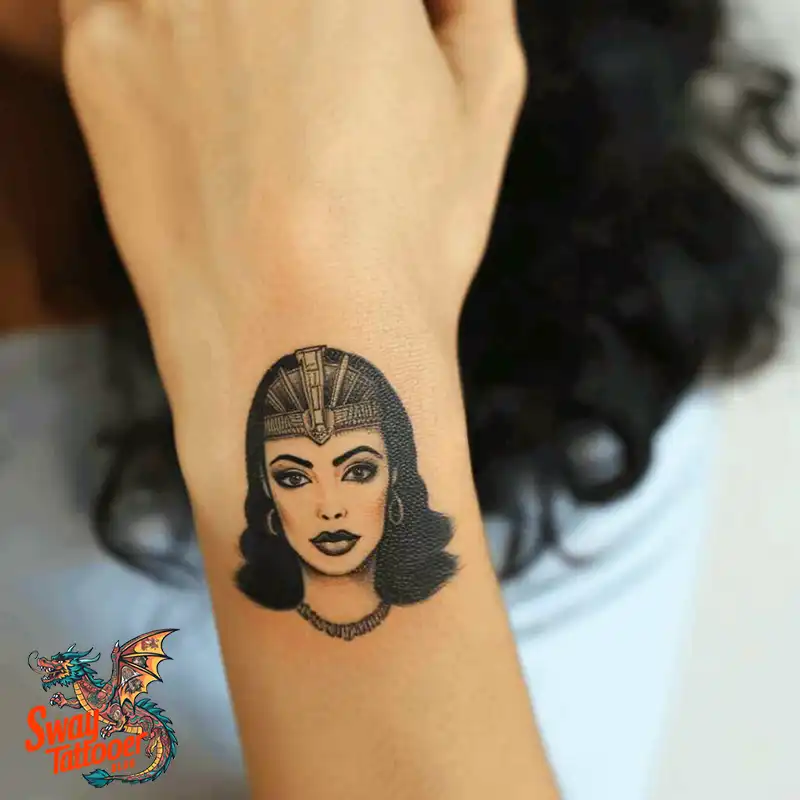
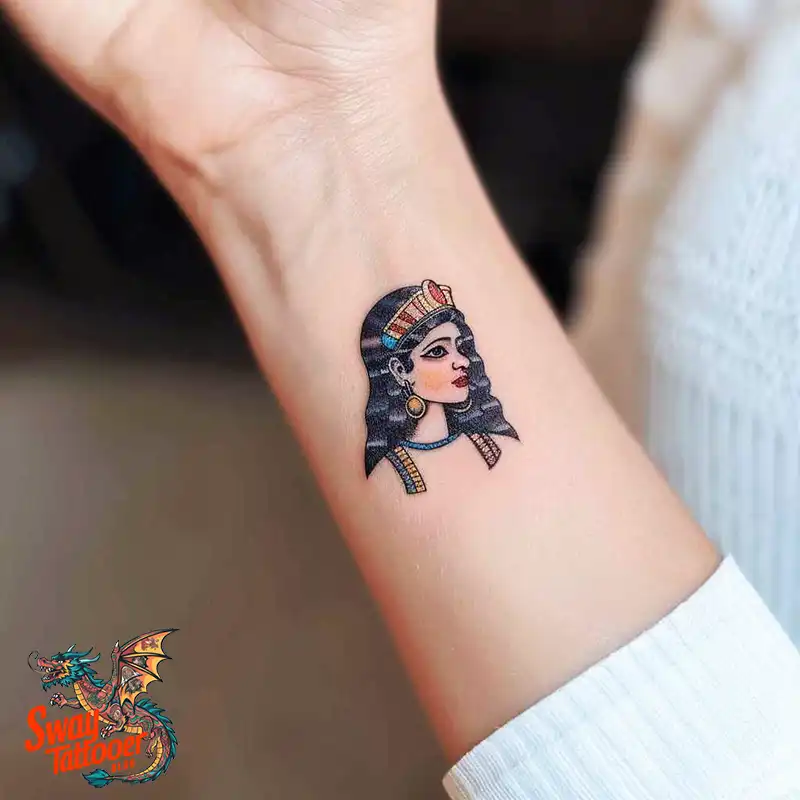
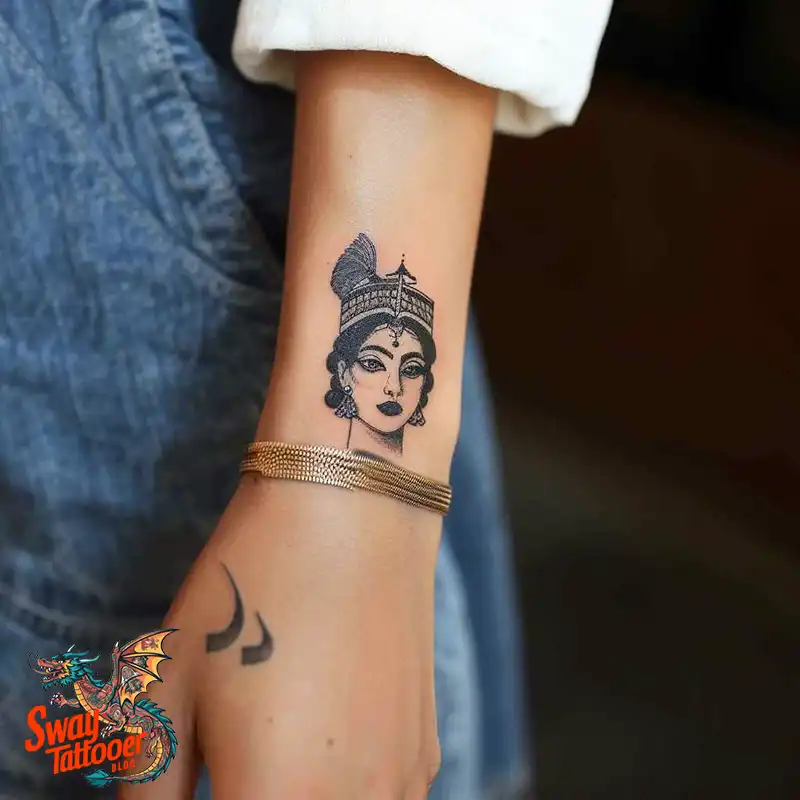
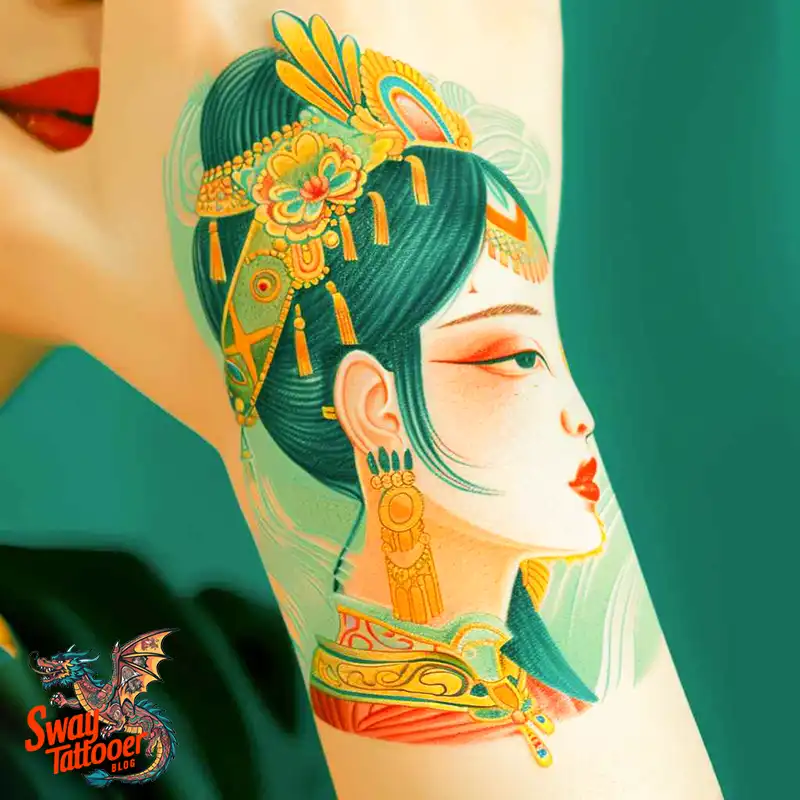
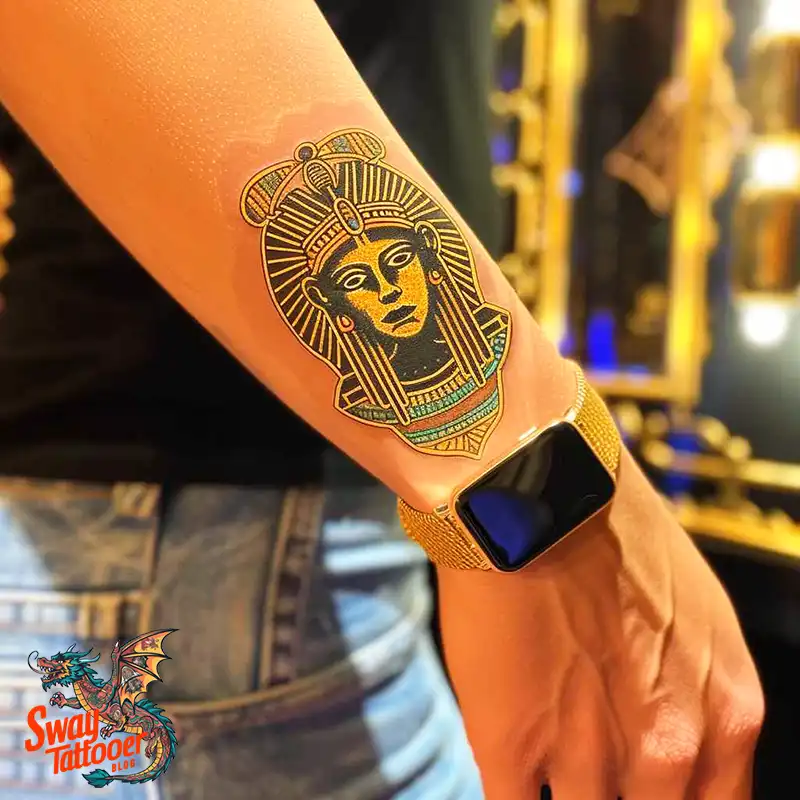

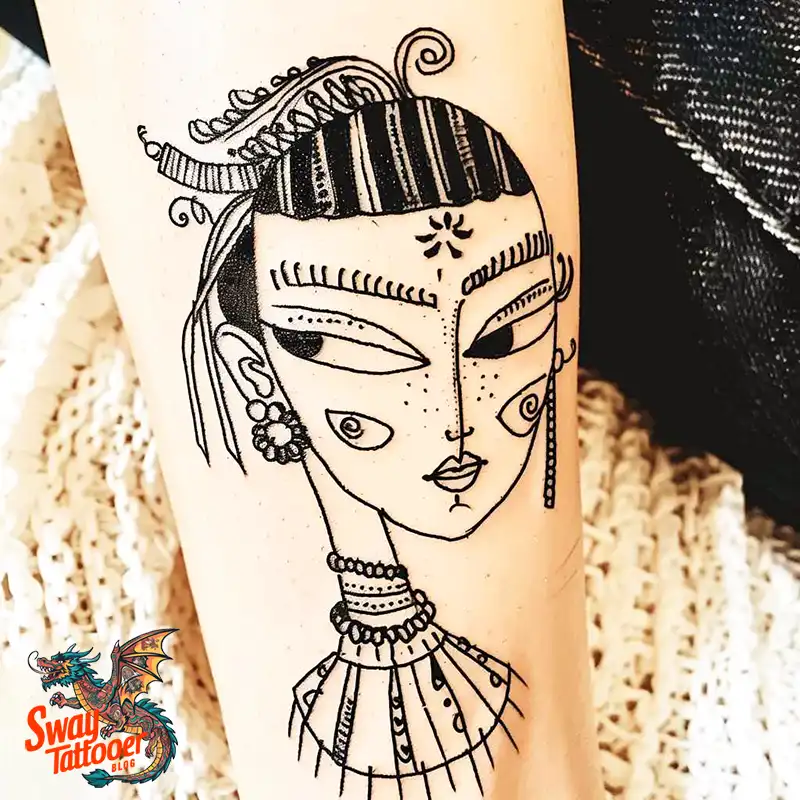
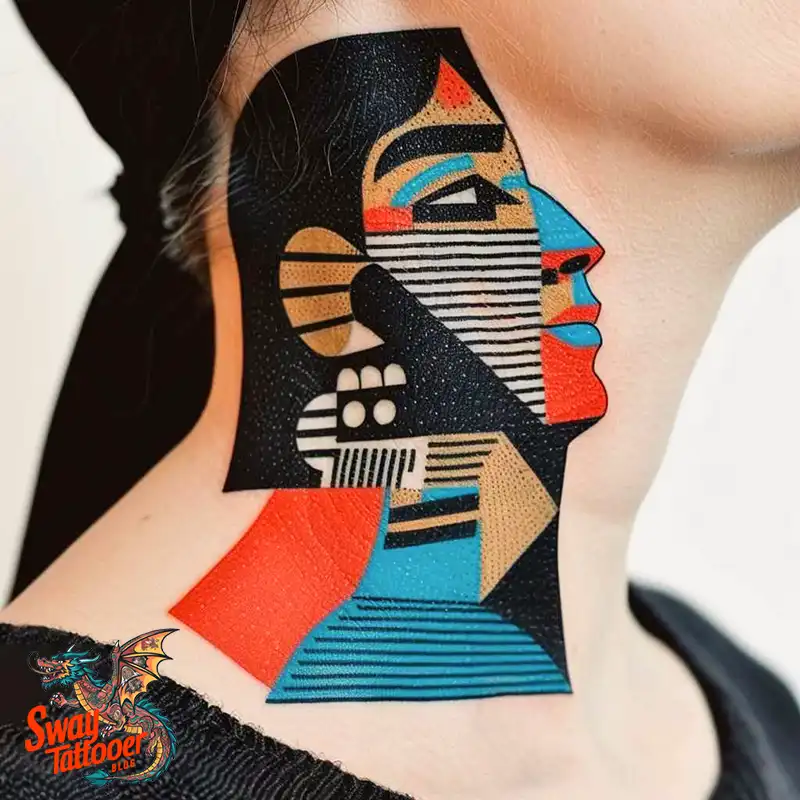
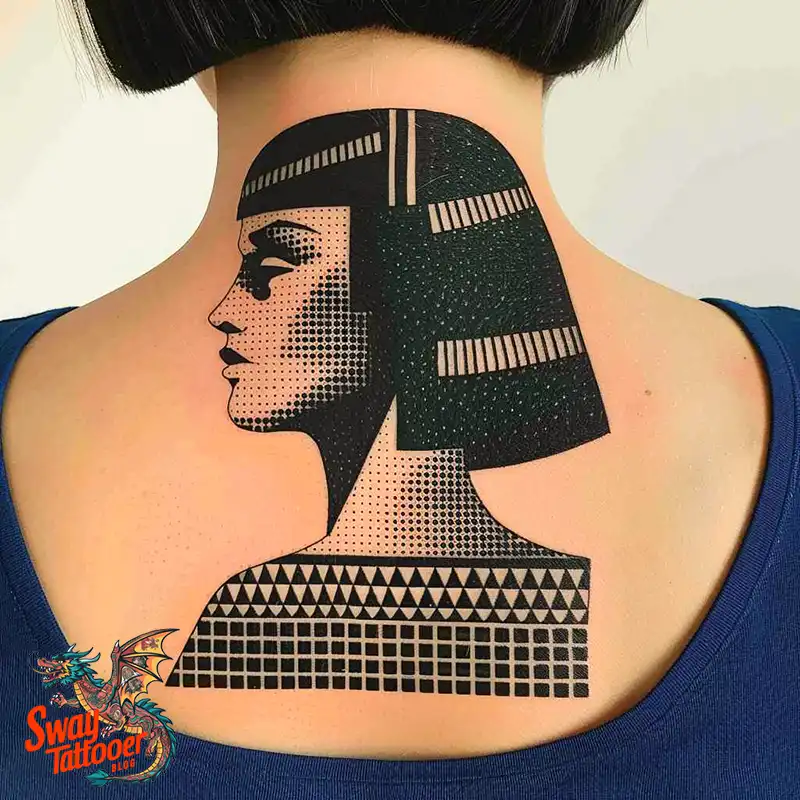
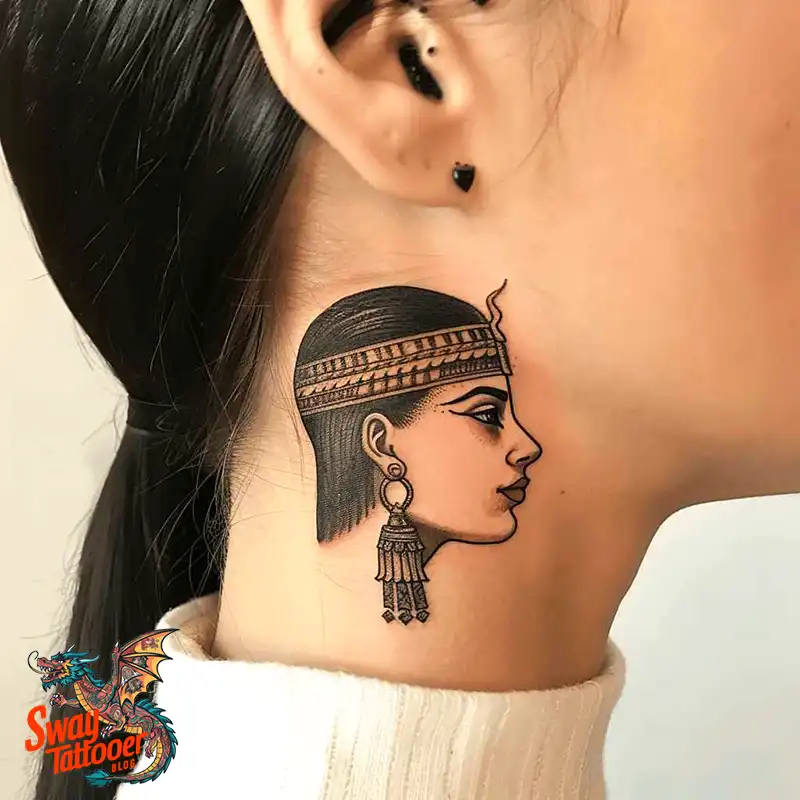
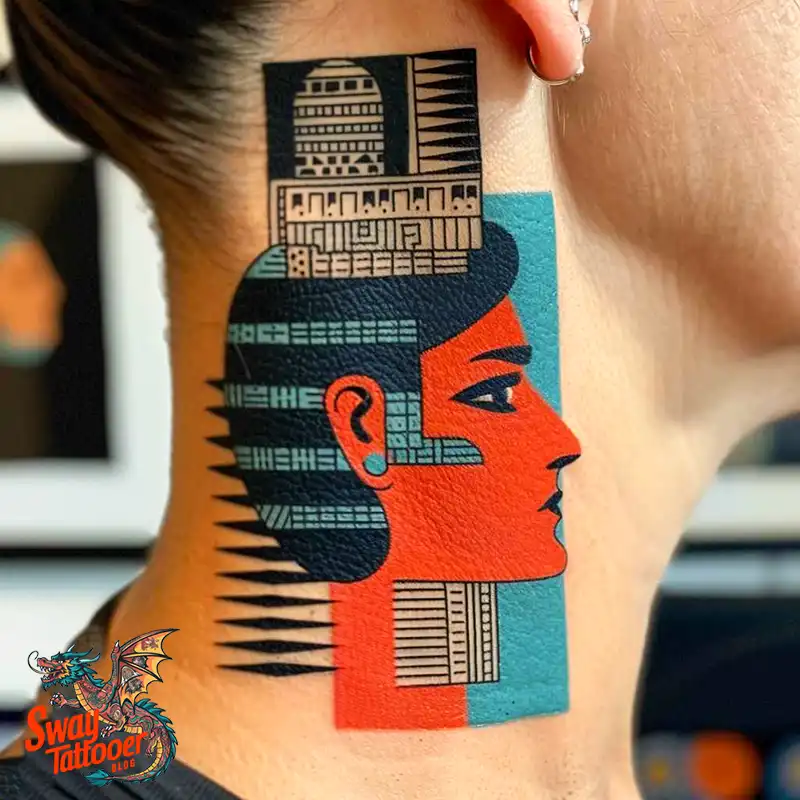
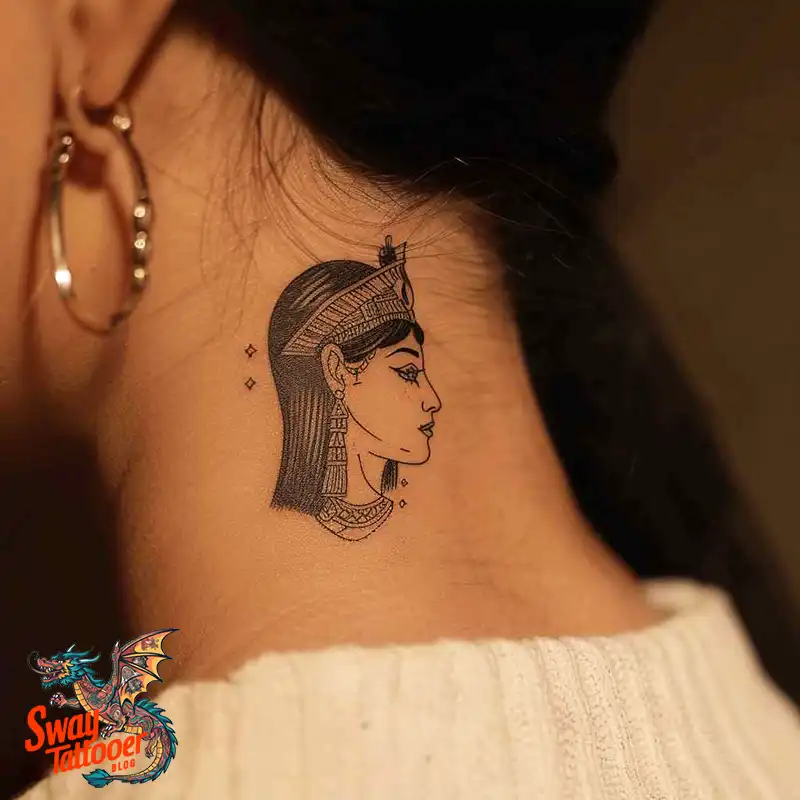
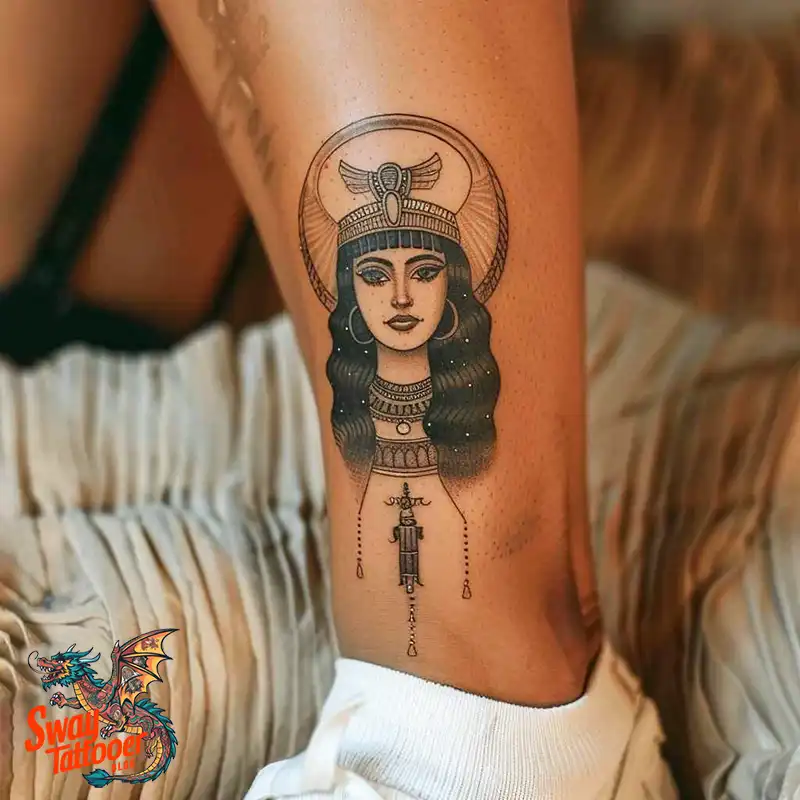


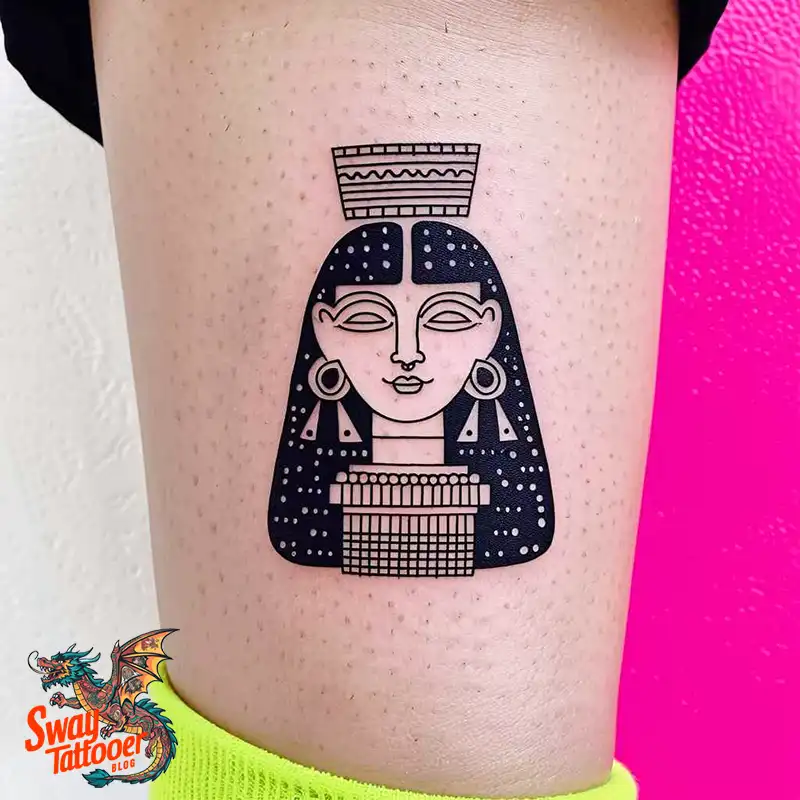
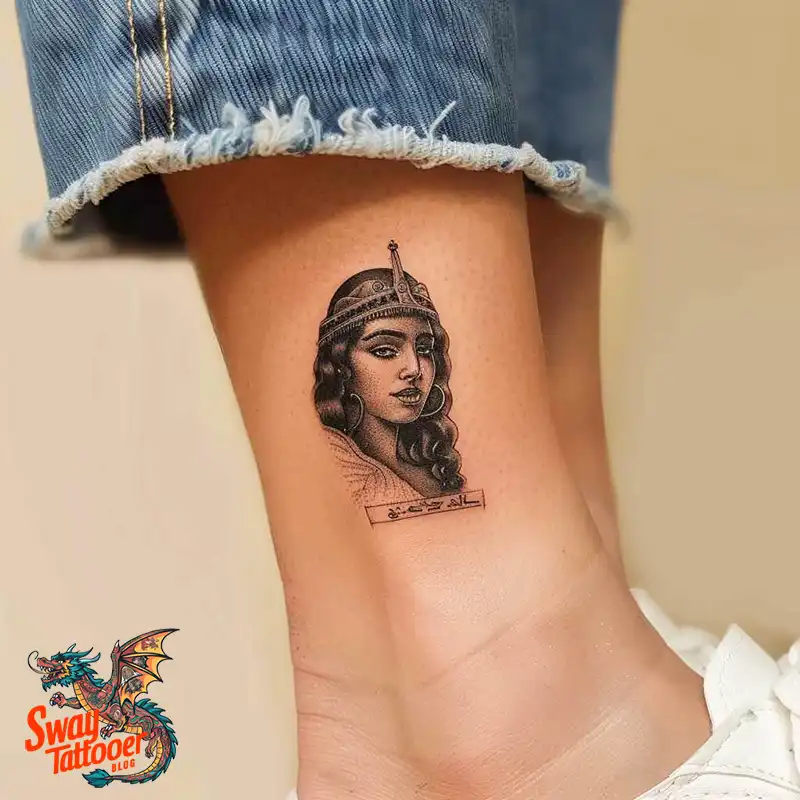

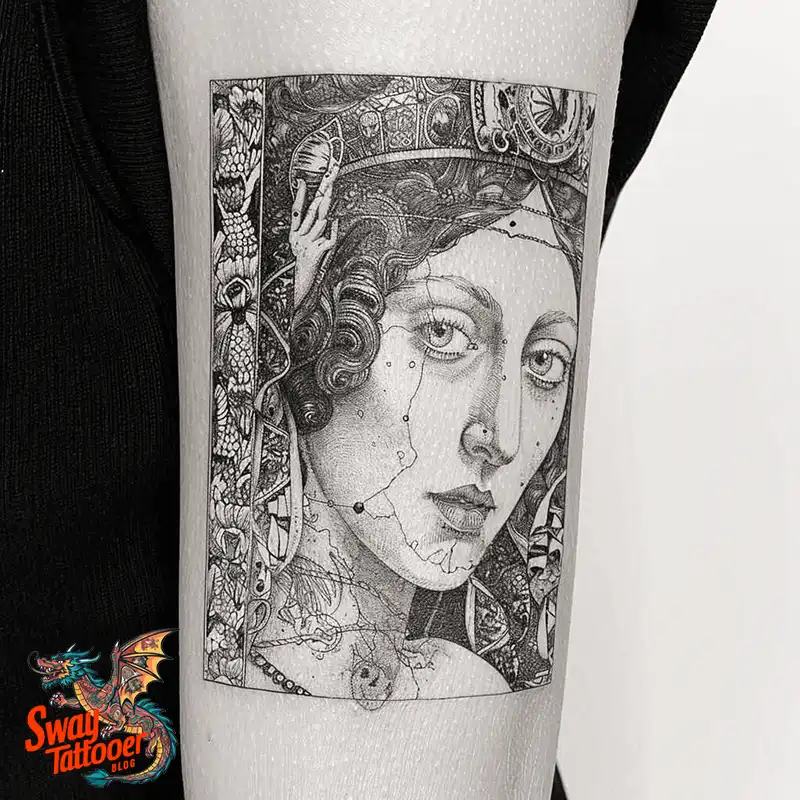
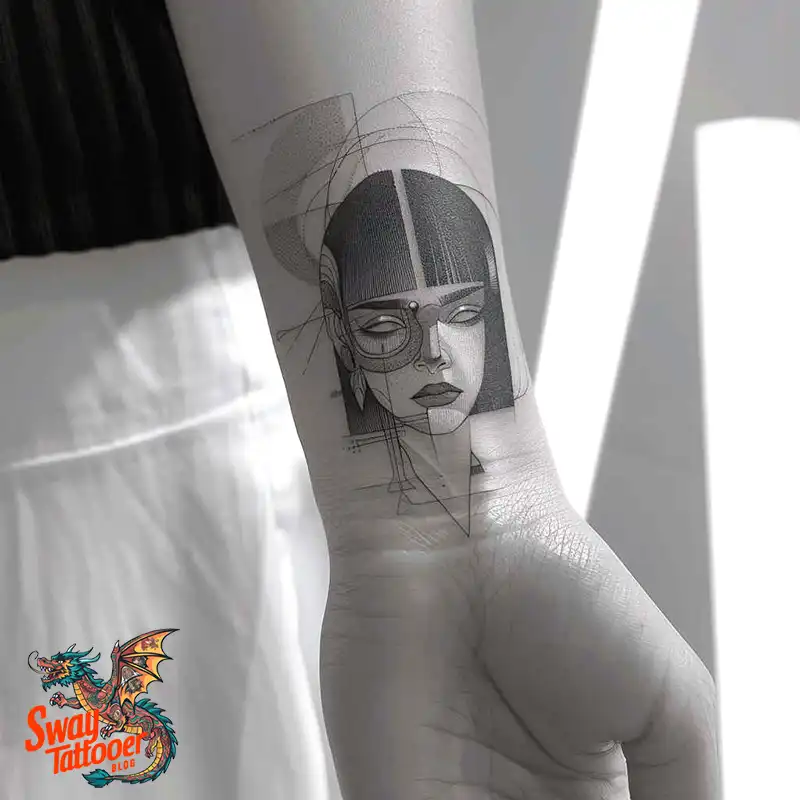

Essential Design Elements:
A Cleopatra portrait must include specific royal symbols. These elements show her status as queen.
The Uraeus and Royal Regalia
The most important symbol is the Uraeus (the protective cobra).
- The Cobra Symbol: The Uraeus is always shown over the king’s brow. It means royalty and divine protection against enemies.
- It is often part of her intricate headdresses and crowns.
- Supplemental Symbols: To add more meaning, artists often include the Ankh (the key of life) and the Scarab (rebirth). Wings can also be added. They mean freedom and her lasting spirit.
Portrait Style and Visual Impact
The style of the portrait changes its effect.
- Cinematic Look: Many modern designs take their style from the 1963 film Cleopatra, starring Elizabeth Taylor. This look includes heavy eyeliner and dramatic makeup. It is more about pop culture glamour than history.
Ideal Style Types:
A Cleopatra tattoo is usually a portrait. The style must capture her likeness and last for a long time.
Hyper-Realism (Looks Like a Photo)
This style tries to look exactly like a photo of her face. It uses very subtle shading and light to capture the look and emotion. This is a hard style to do. It needs a large, smooth area and an expert artist who is a master of light and shadow.
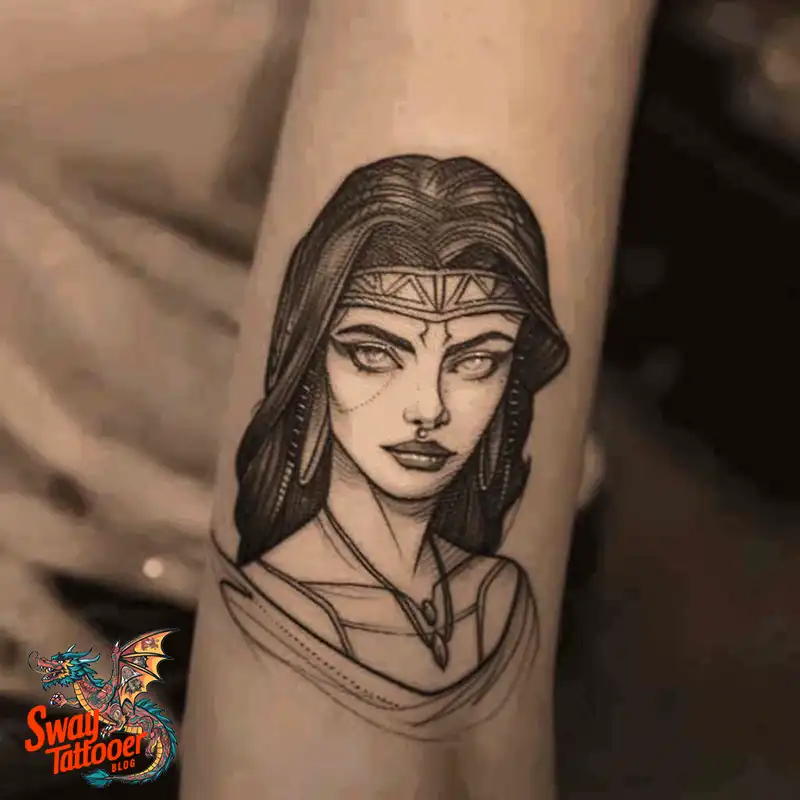
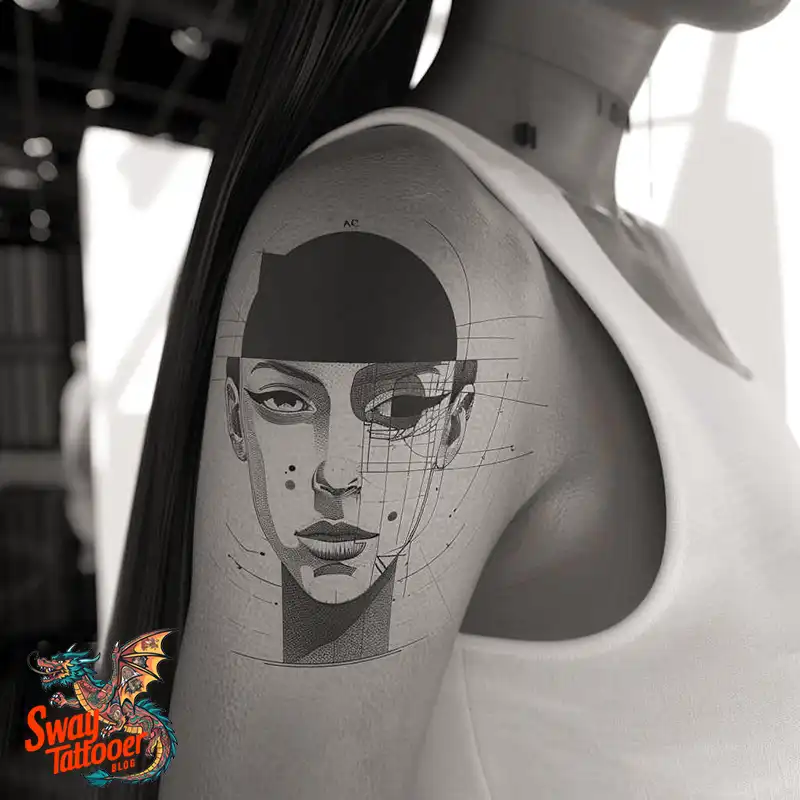
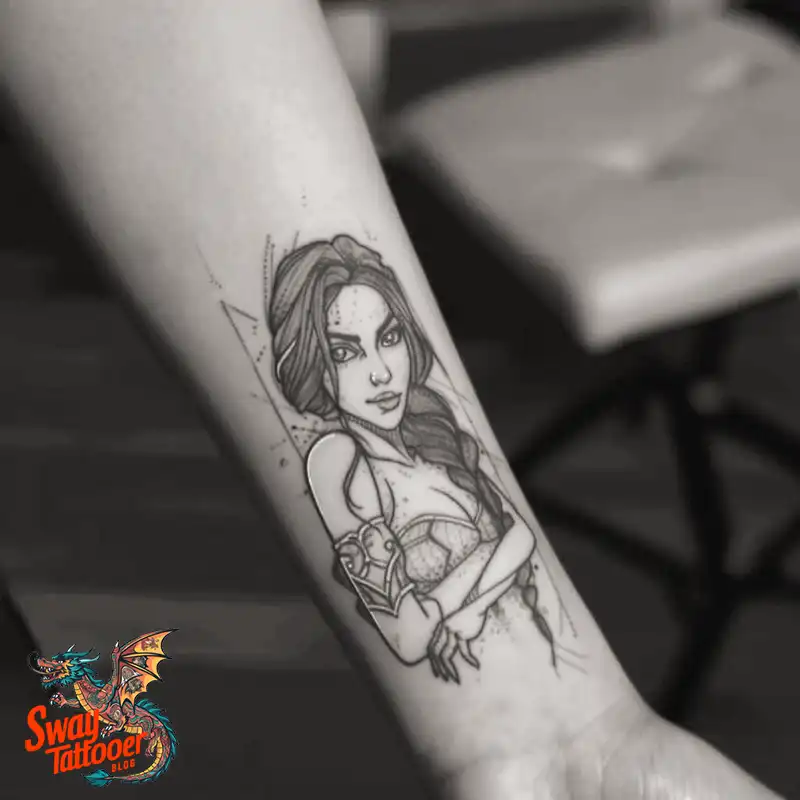

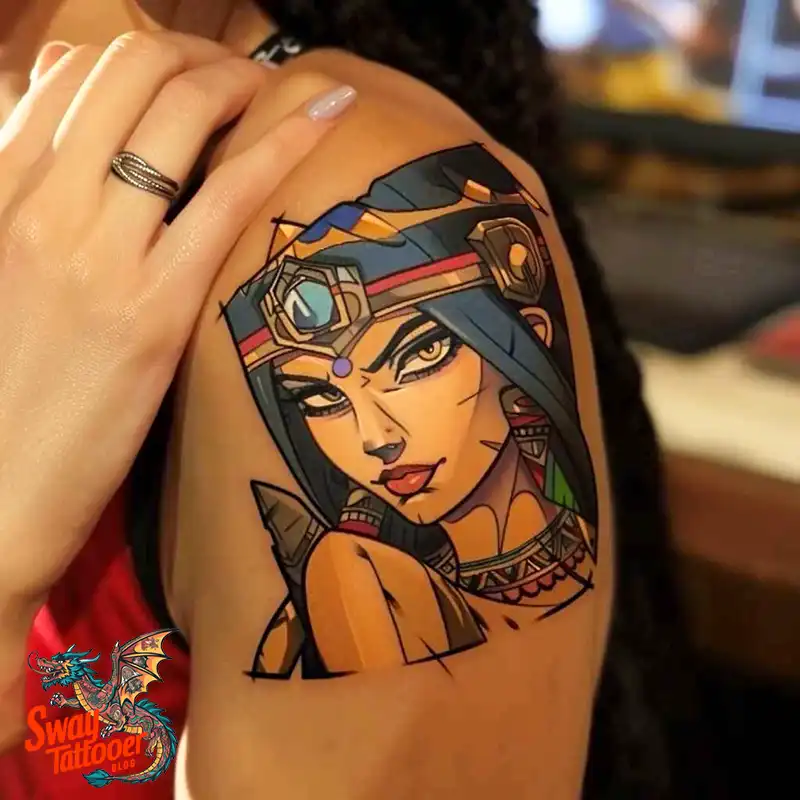
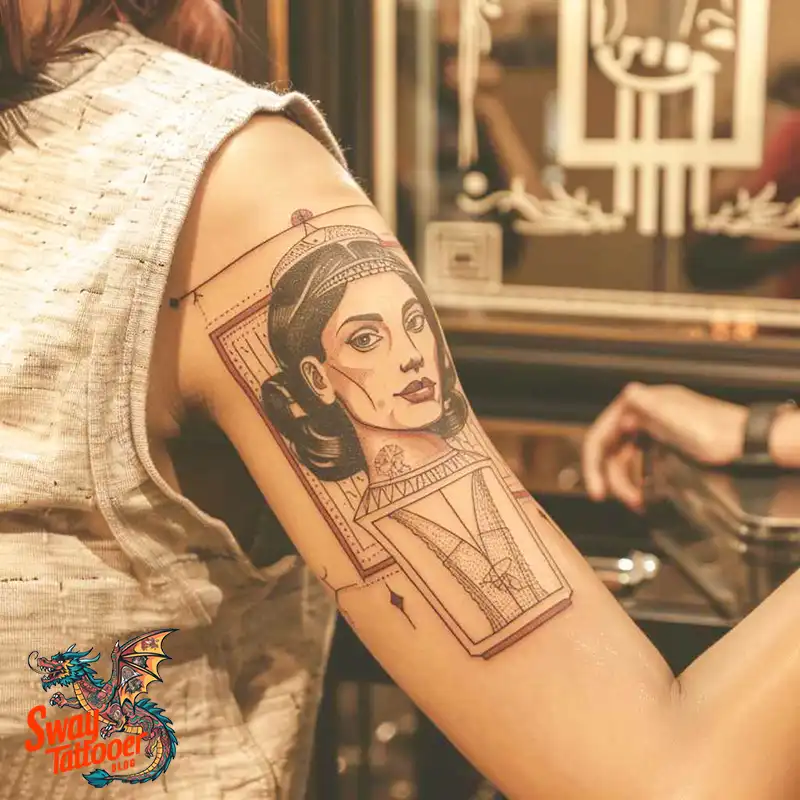
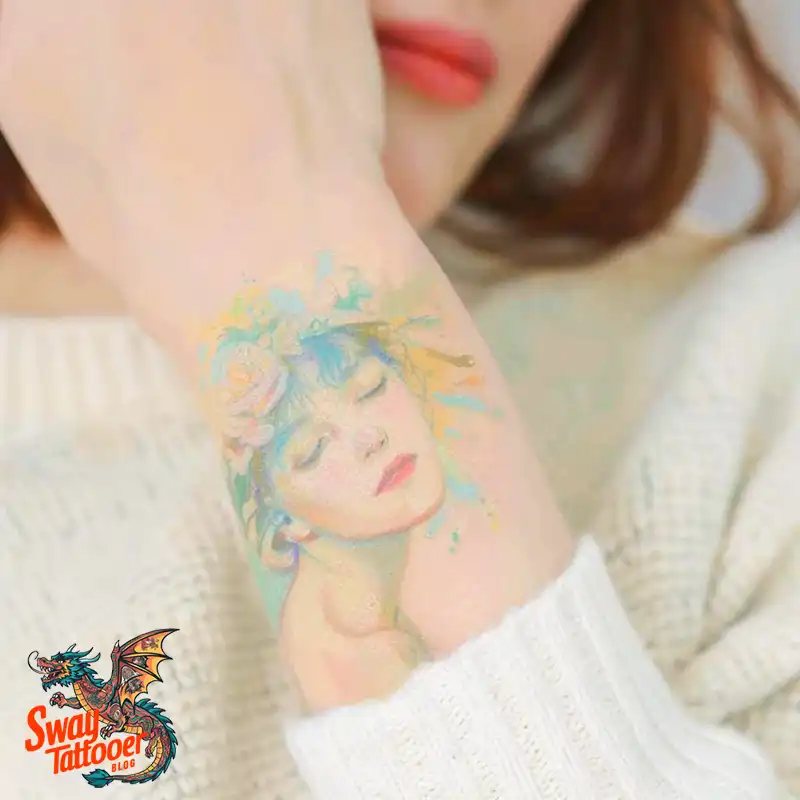
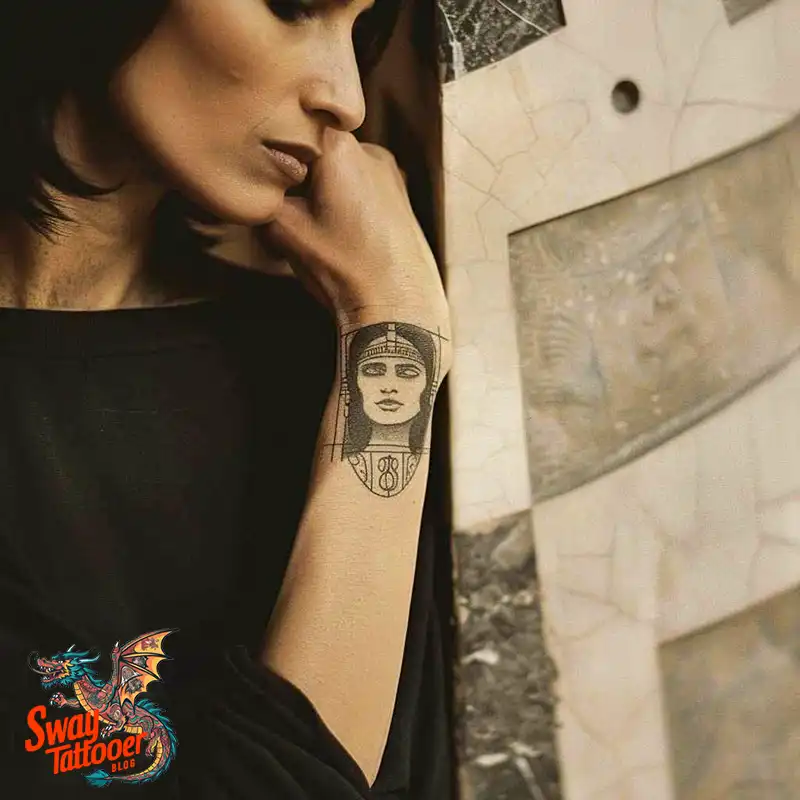
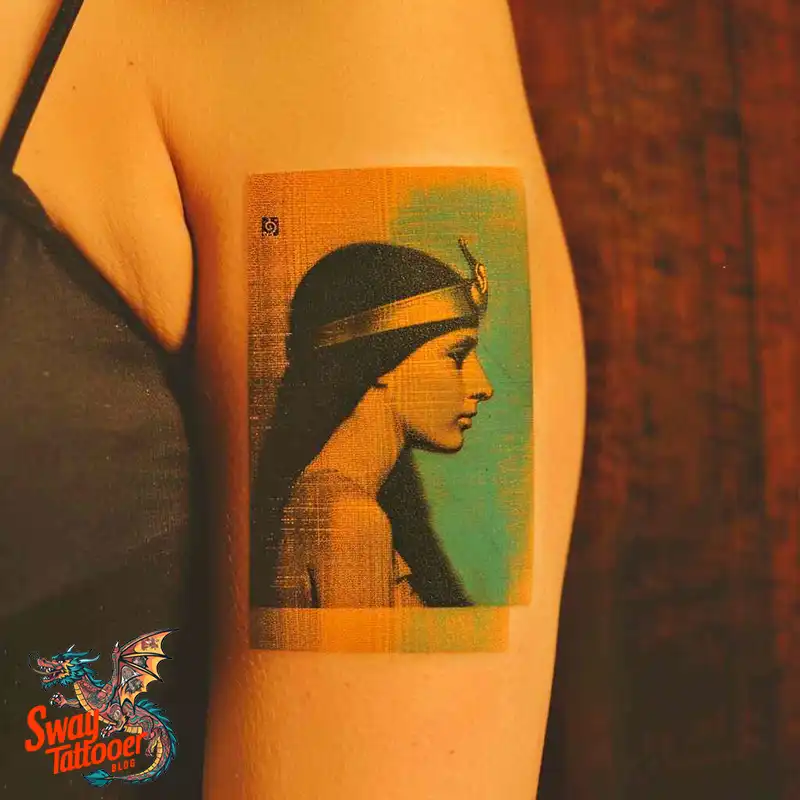
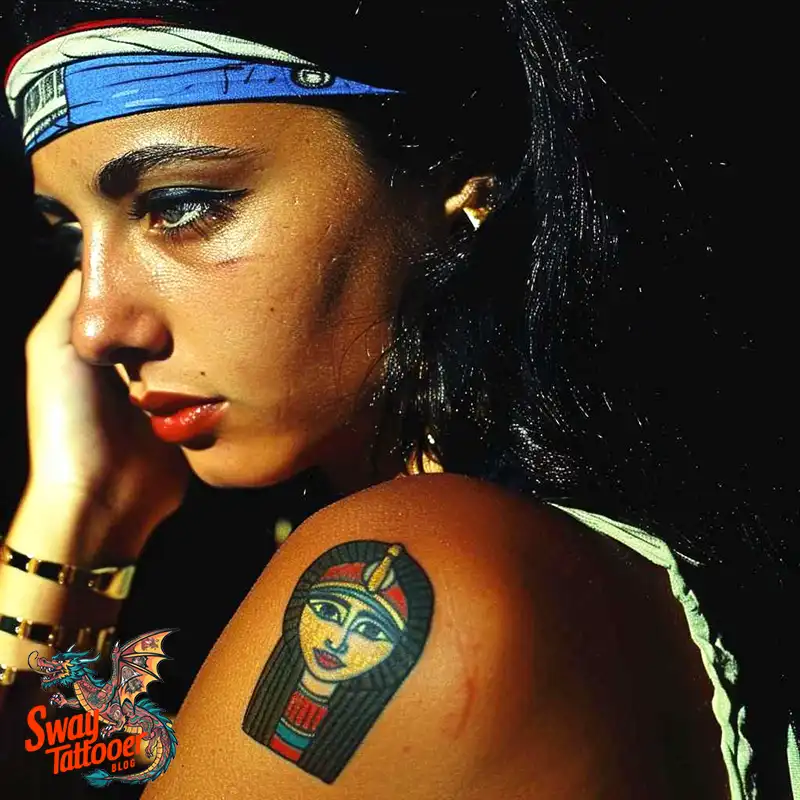
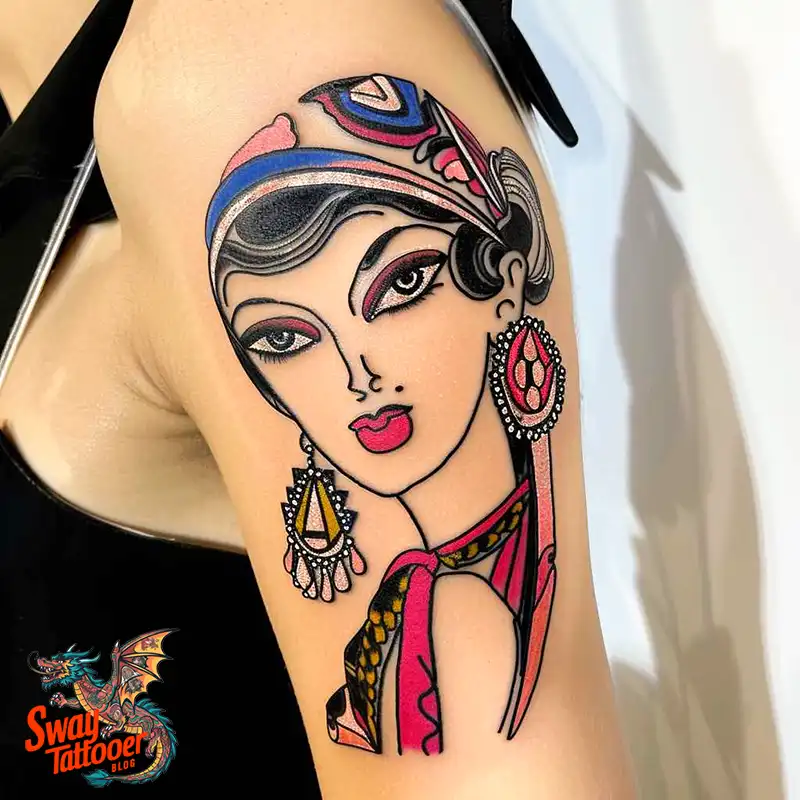
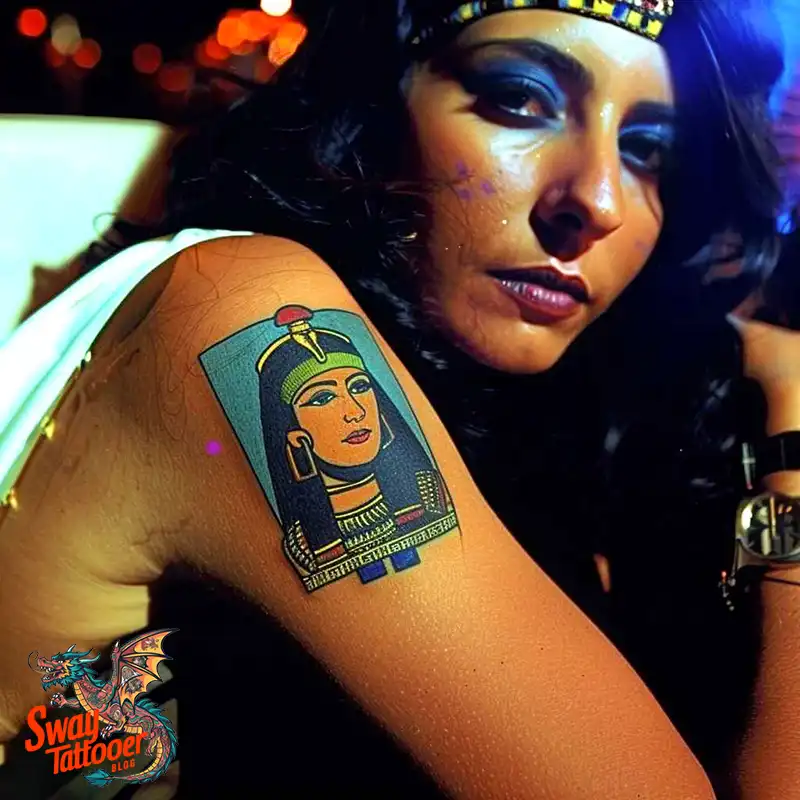
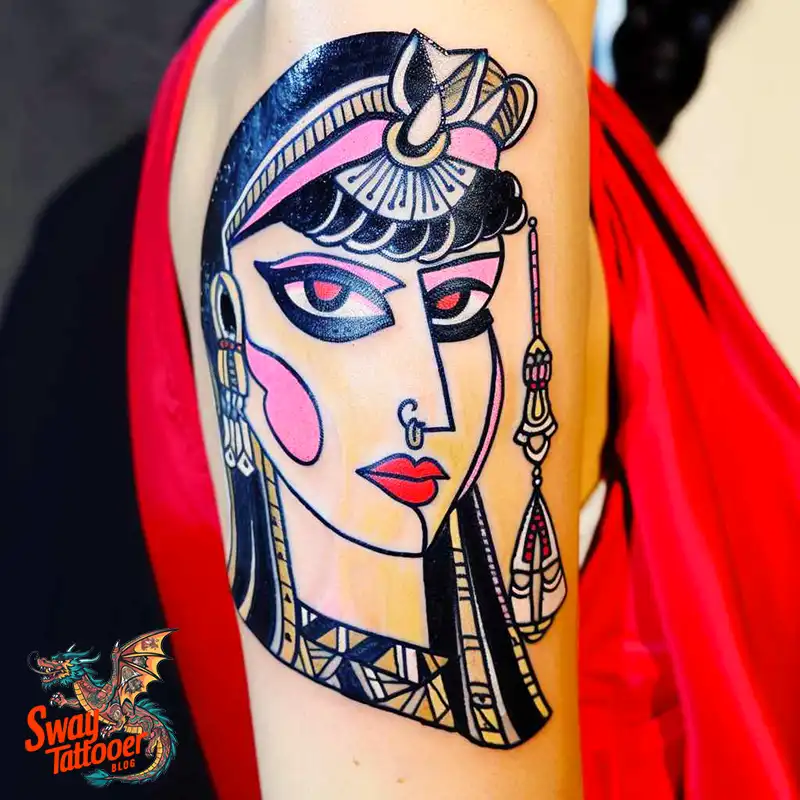

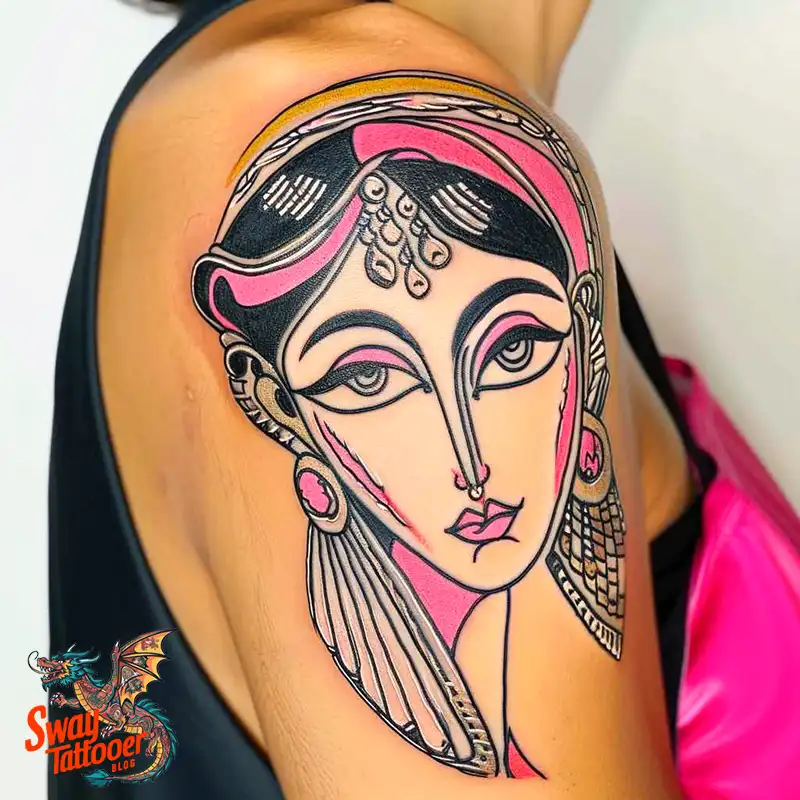
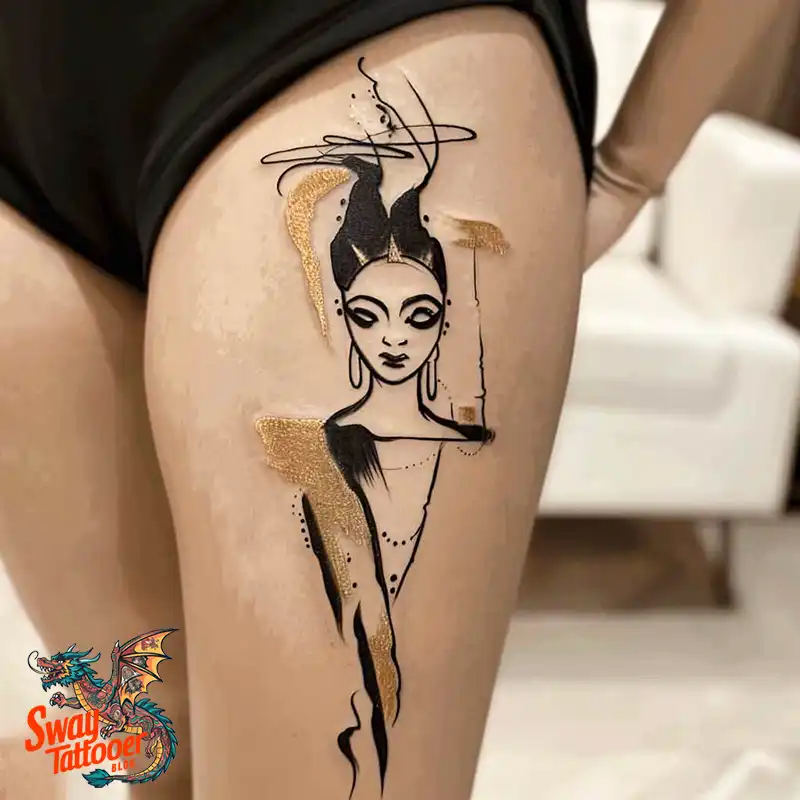


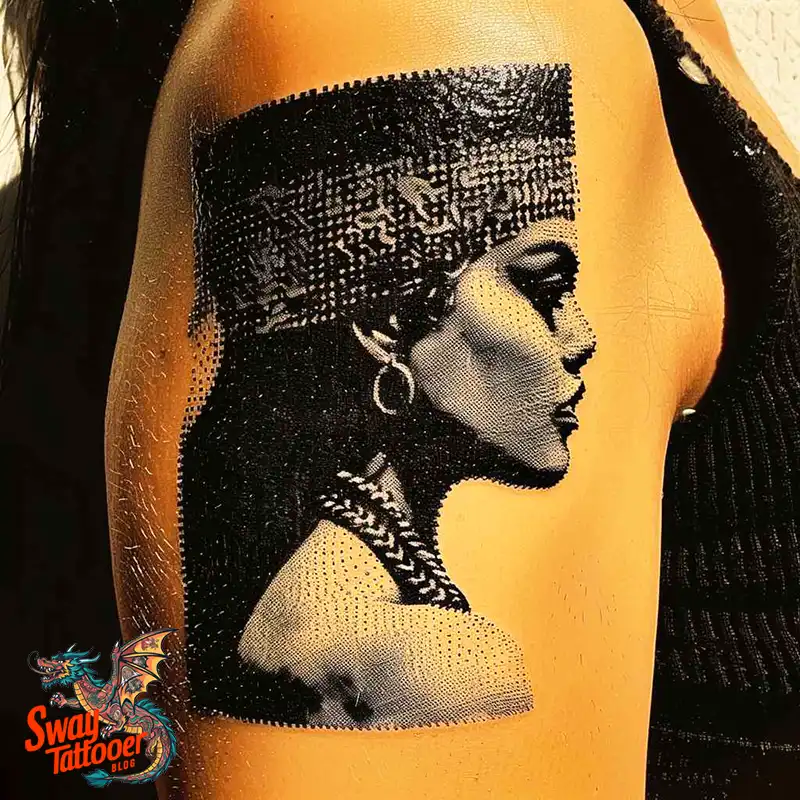
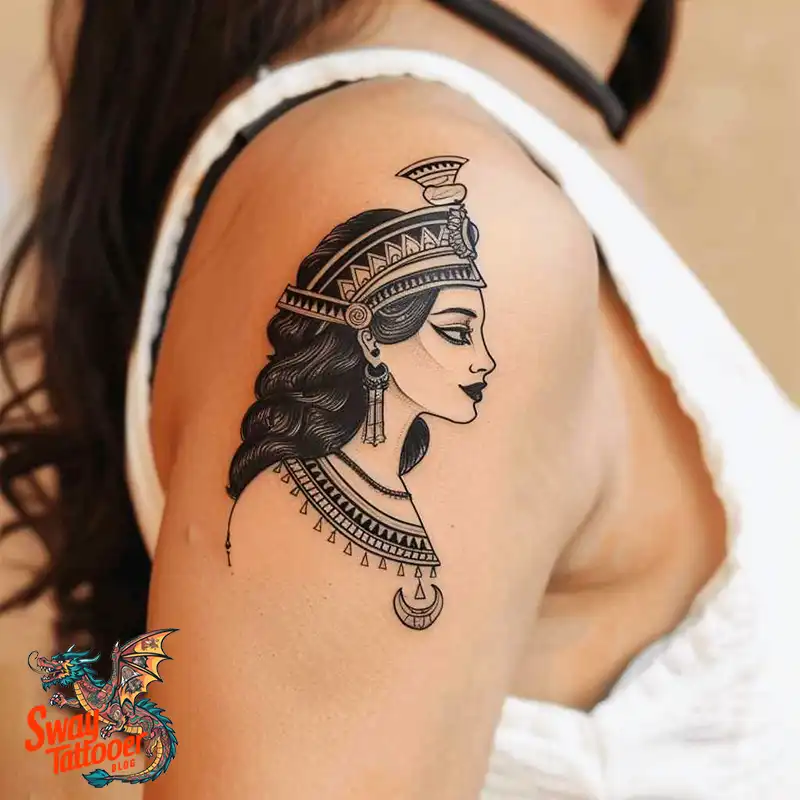


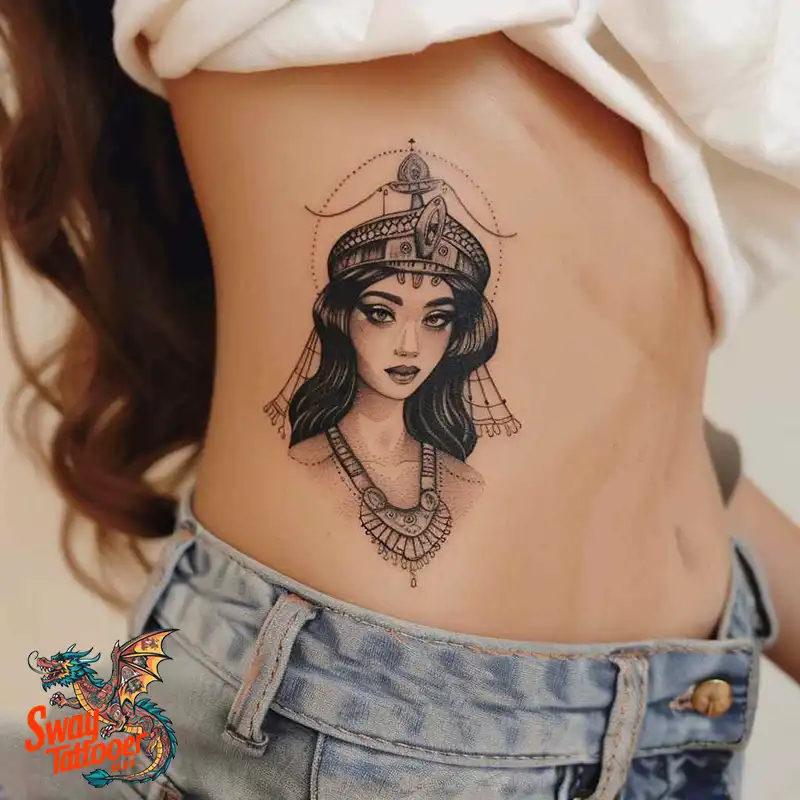
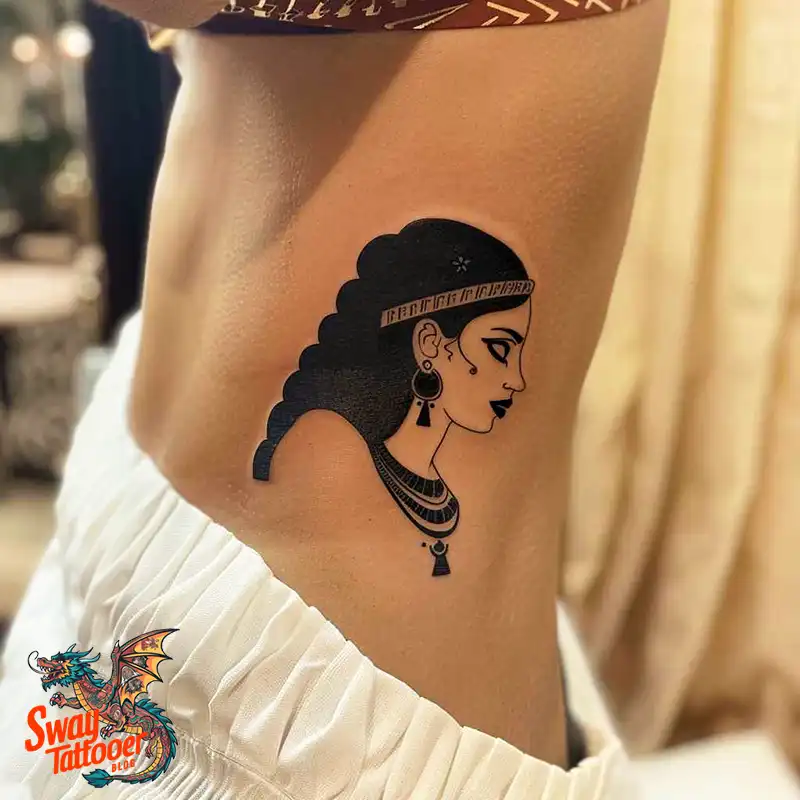
The Neo-Traditional Approach
This is a great choice for a strong, lasting portrait. It uses bold, clear black outlines from traditional art. But it adds rich, deep colors and intricate details.
- Why it Works: The strong black outline keeps the portrait’s shape clear and readable for decades. It is much more durable than simple realism.
- The Look: This style looks grand and theatrical. It is perfect for Cleopatra’s dramatic persona.
Fine Line and Minimalist
This style is subtle and elegant. It uses thin lines to show her profile. Be careful: Thin lines fade faster. They are susceptible to blurring over time. You must protect this style from the sun constantly.
Optimal Placement for Detail and Impact
The complex details of a Cleopatra tattoo portrait, especially if done in Realism or Neo-Traditional styles, need a large, smooth, and stable area of skin. The size of the tattoo should always be the first thing that decides where it goes.
Large, Detailed Canvases
To show off detailed artwork, some spots on the body are much better.
- The Outer Thigh: This is the spot we recommend most for a large, detailed portrait. The outer thigh is a big, smooth area. This gives the artist room for all the shading and intricate symbols. Also, this spot has thicker skin and less movement. This makes the experience less painful and helps the fine lines heal cleanly, improving how the art looks over time.
- The Back and Shoulder Blade: These areas offer the largest possible canvas. They are great for full scenes that include the queen and many Egyptian motifs.
- Upper Arm (Bicep/Tricep): This area is versatile. It can hold medium-to-large detailed portraits well.
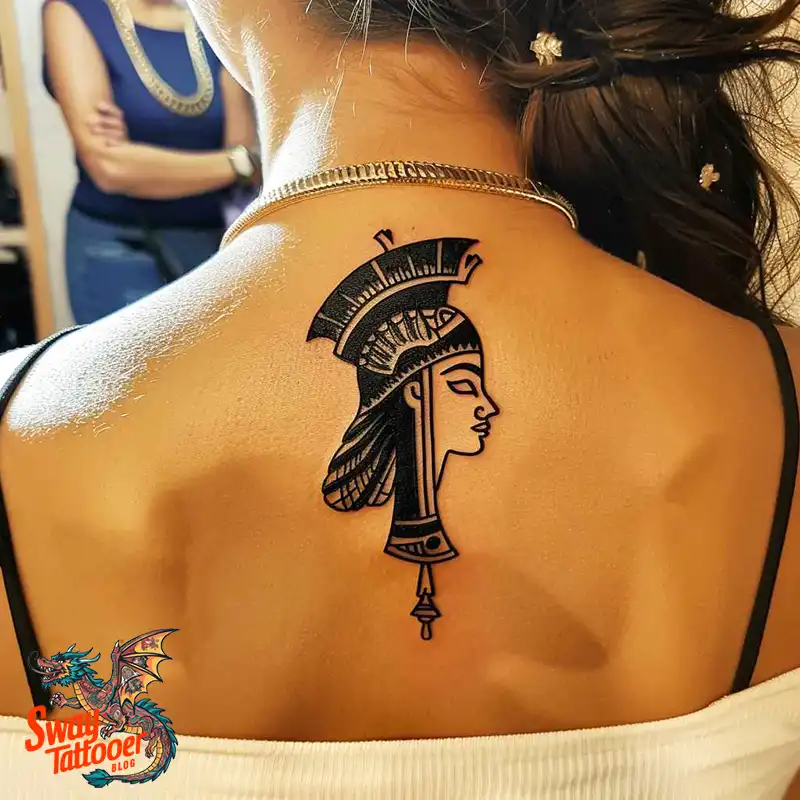
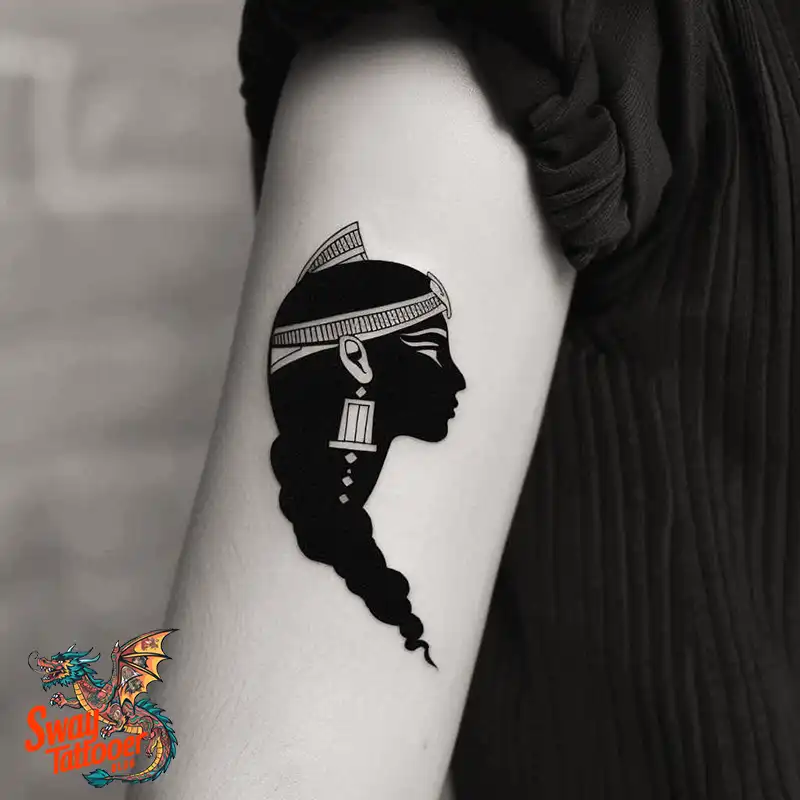


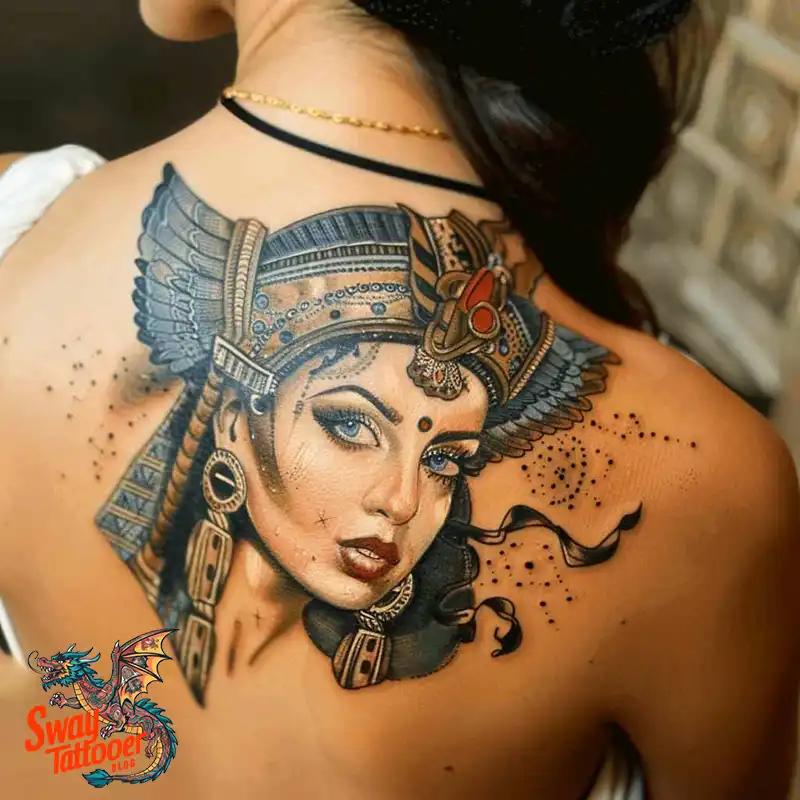
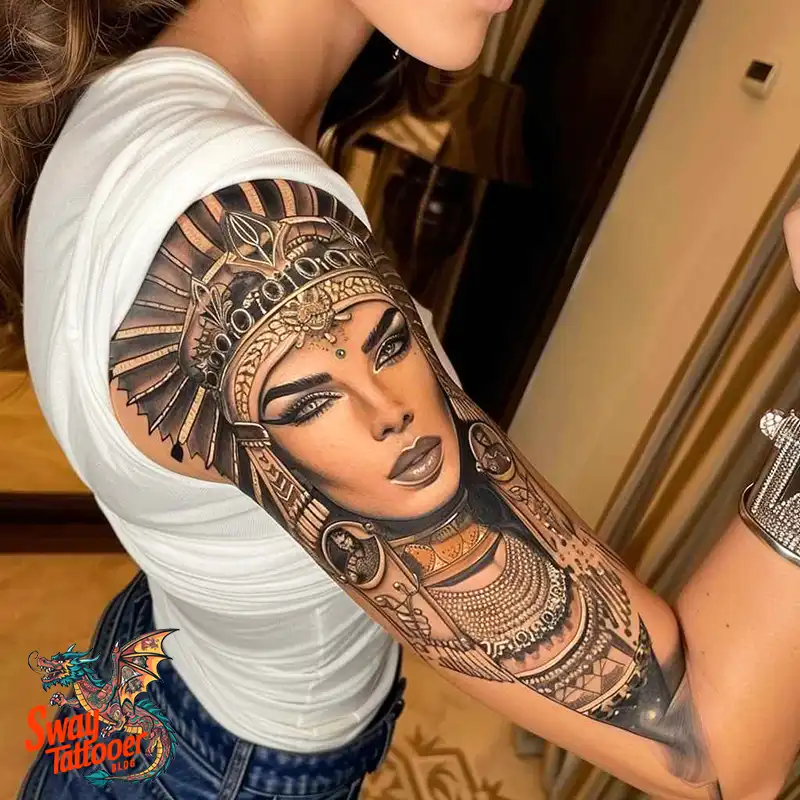
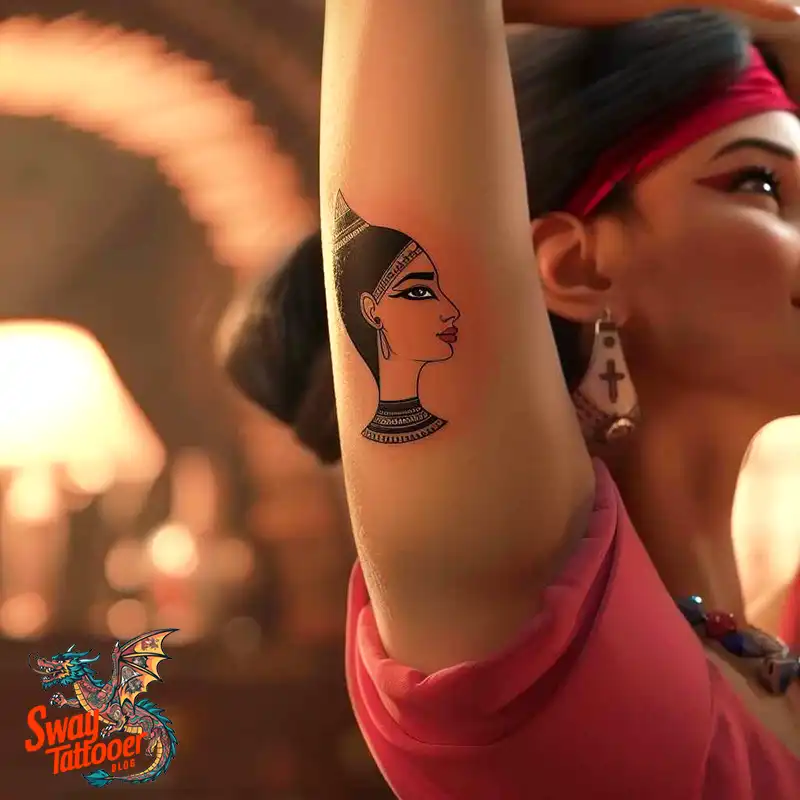

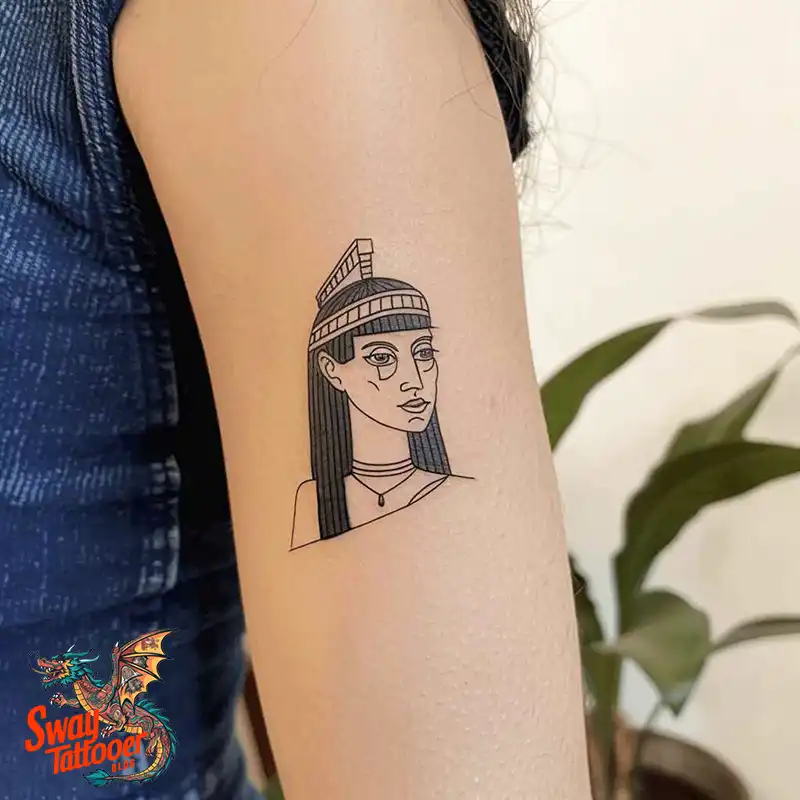

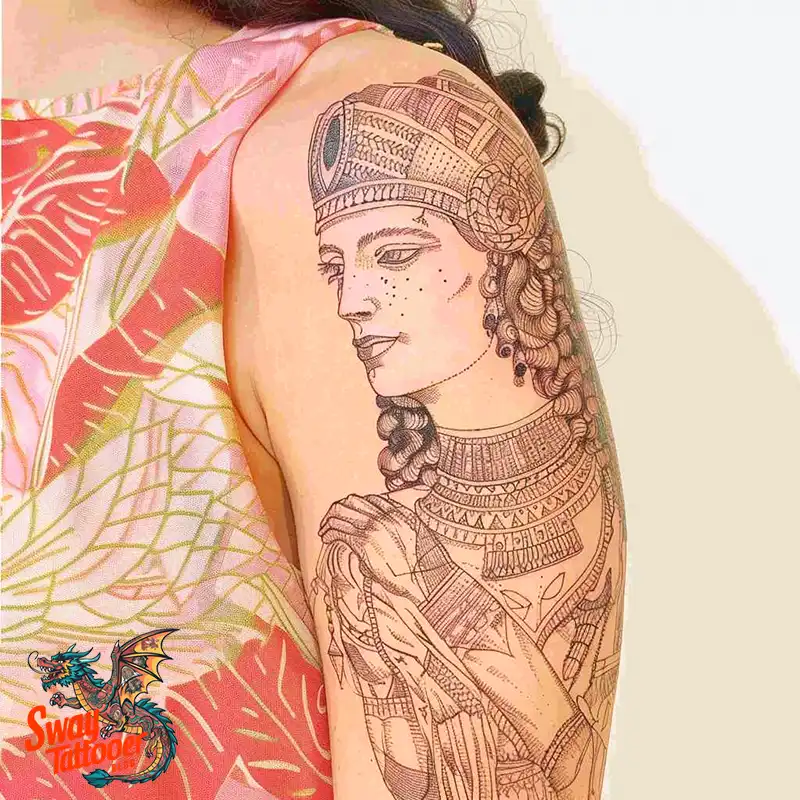
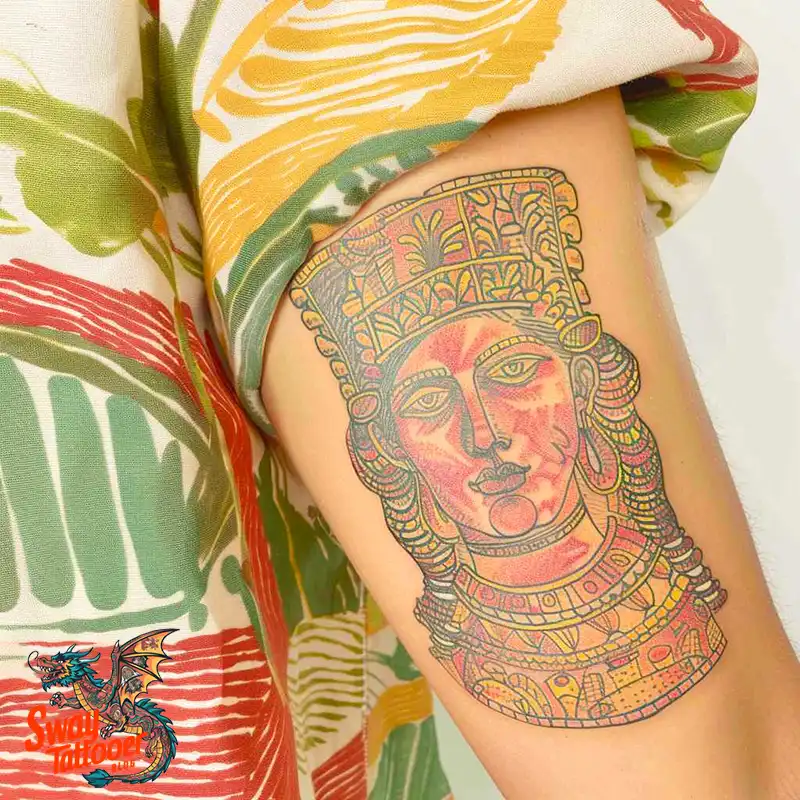

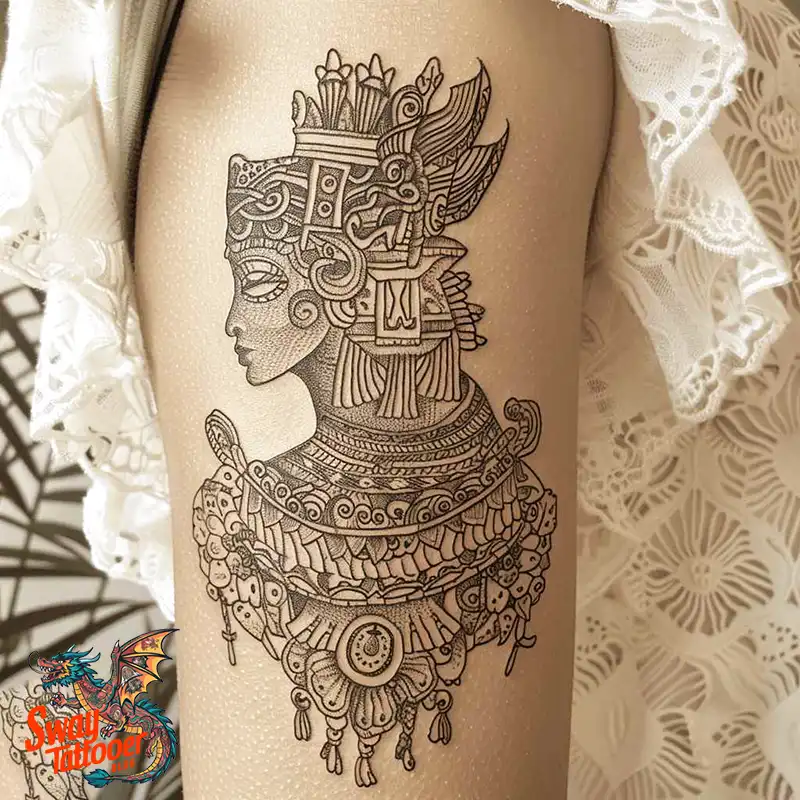
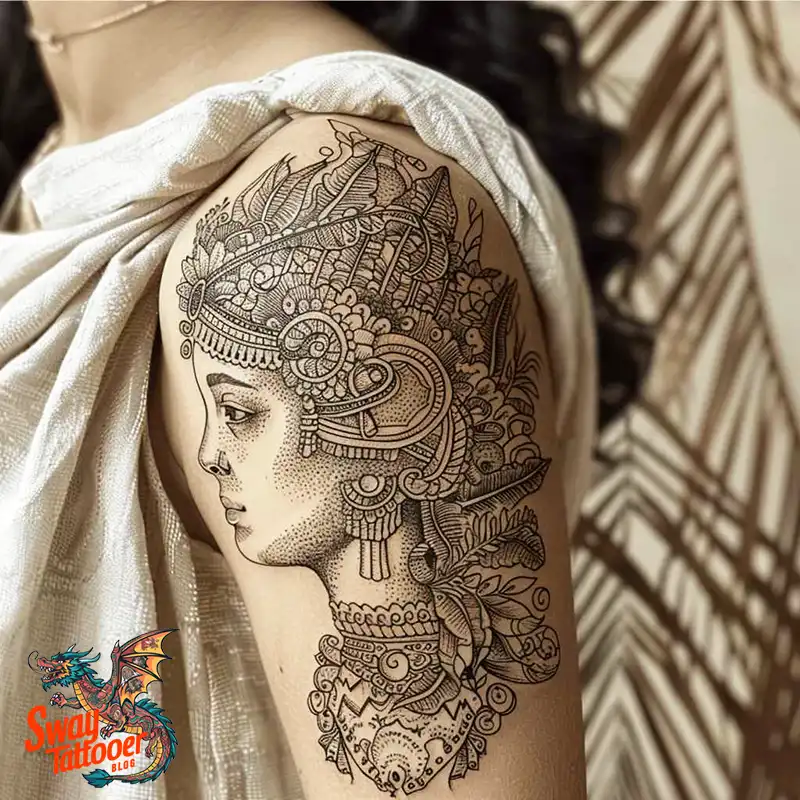
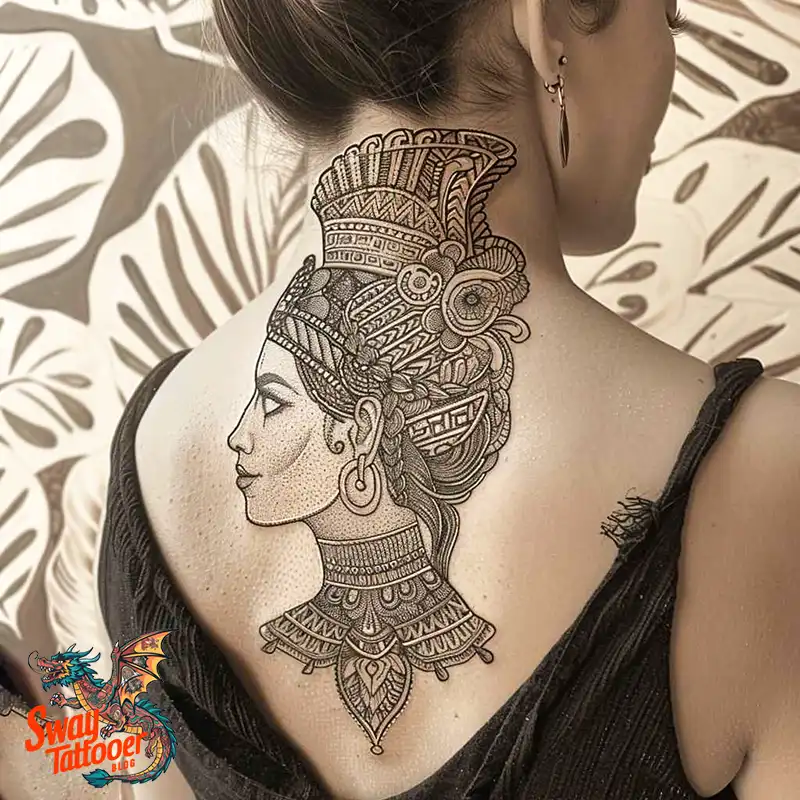
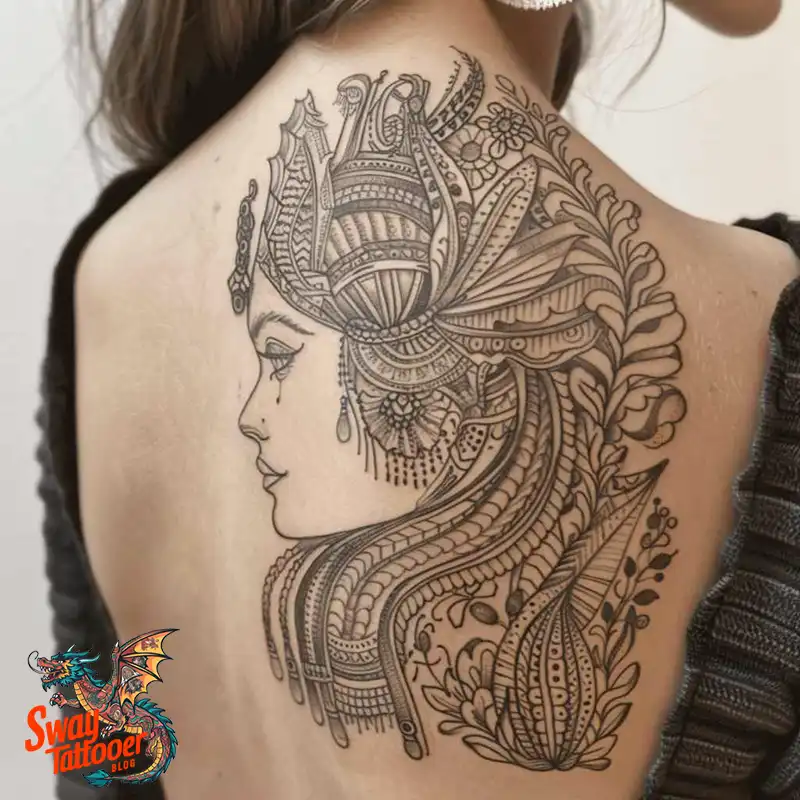
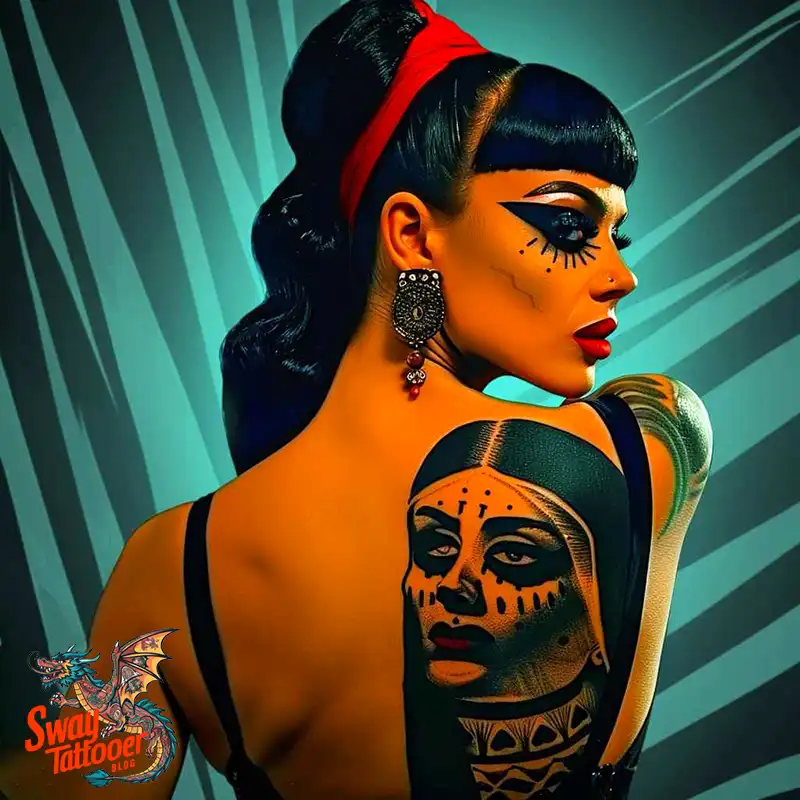
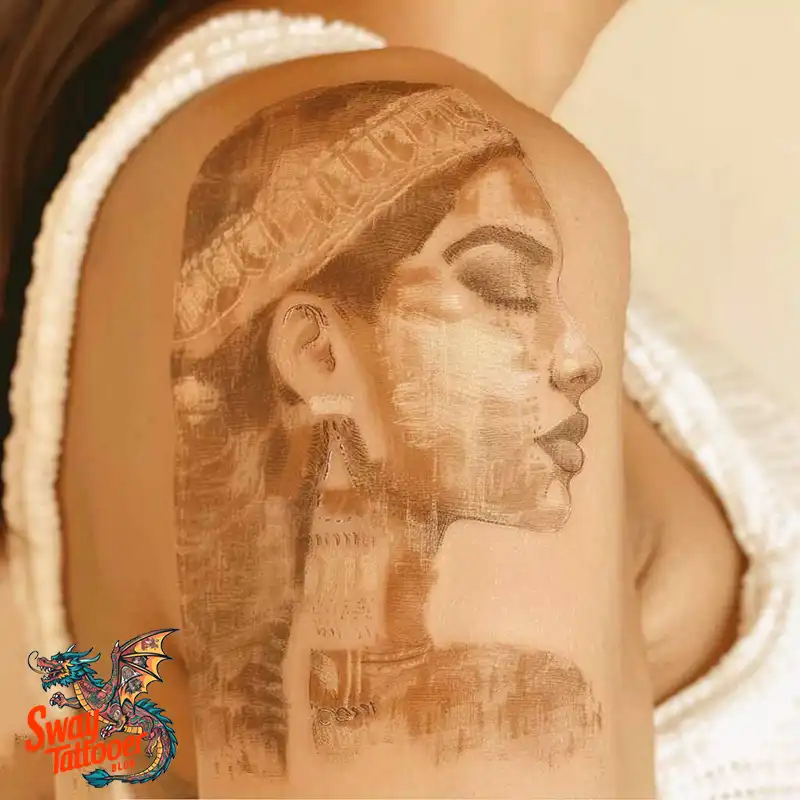



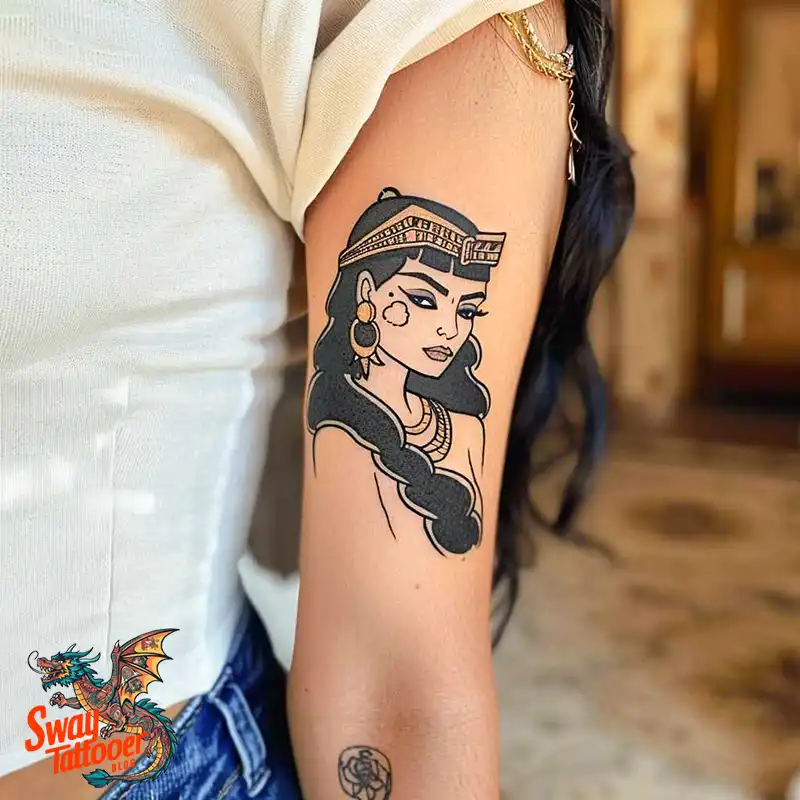
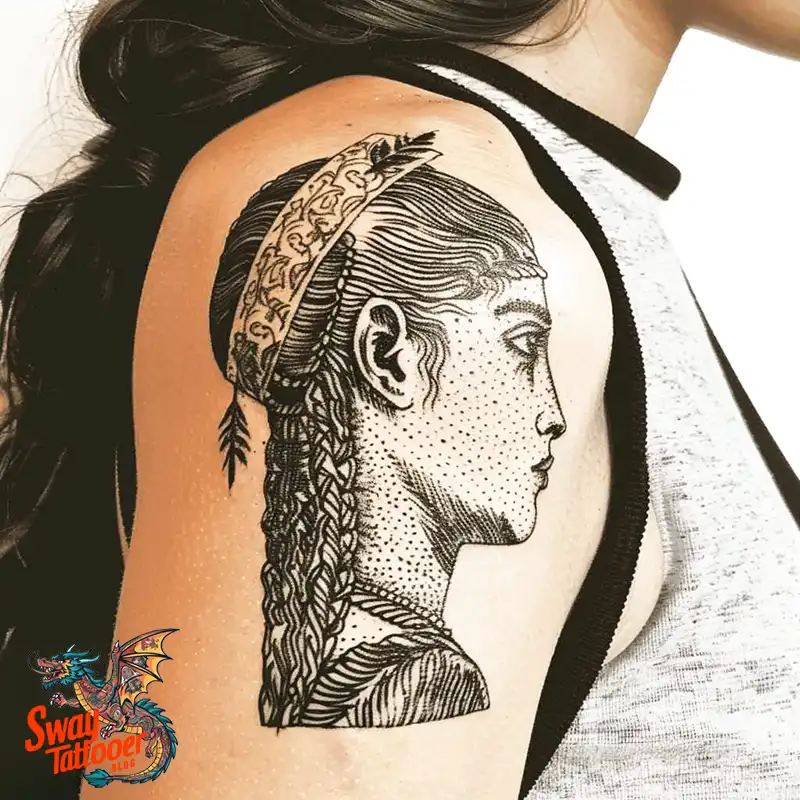
Medium and Sensitive Canvases
- The Forearm and Calves: These areas are great for contained portraits, but the artist must carefully manage the amount of detail.
- Sensitive Spots: Areas like the inner thigh are more painful. They have thin skin and more nerves. The healing process is also harder because of rubbing from clothes and movement. If you choose a spot like this for deep personal meaning, you must be extremely careful with aftercare to prevent the ink from blurring.
Artist and Budget:
A portrait of Cleopatra is a high-stakes investment. You must hire an artist with specialized expertise.
Vetting for Portrait Expertise
Portrait realism is one of the hardest styles. The artist must be a master of the face, likeness, and light.
- Look for Specialization: You must find an artist whose portfolio focuses strongly on Realism or Neo-Traditional portraits.
- Check Healed Work: The best way to know the artist’s skill is to ask to see photos of their tattoos after they have fully healed. A healed photo shows how well the lines and shading truly last.
- Consultation: Always start with a thorough talk. The artist should clearly explain how they will achieve the likeness and detail.
Pricing for Portrait Complexity
The quality of the art is directly linked to the price. Choosing a cheaper, less experienced artist for a complex portrait is highly risky.
- Hourly Rates: Experienced artists (5+ years) charge between $150 and $300 per hour. Expert artists can charge $300 to over $1000 per hour.
- Medium Portrait Cost: For a detailed medium portrait, expect the flat rate to be around $800 to $1,100+ from an expert.
- Why the Price is High: The cost is an investment in quality assurance. It minimizes the risk of mistakes, blurring, and the potential need for expensive corrections later.
Aftercare and Longevity:
The long life of a detailed portrait depends entirely on meticulous care and maintenance.
Immediate Healing Protocol
The first two weeks are vital for a successful tattoo.
- Cleaning: Gently wash the area with mild soap to remove residue. Do not rub; gently pat dry.
- Moisturizing: Apply a thin layer of unscented lotion regularly. Do not use too much, as this can draw ink out during the healing process.
- Hands Off: Strictly avoid picking at scabs or peeling skin, as this pulls out ink and ruins the detail.
- Avoid Friction: Wear loose clothing, especially for tattoos on the ribcage or inner thigh, to minimize rubbing during healing.

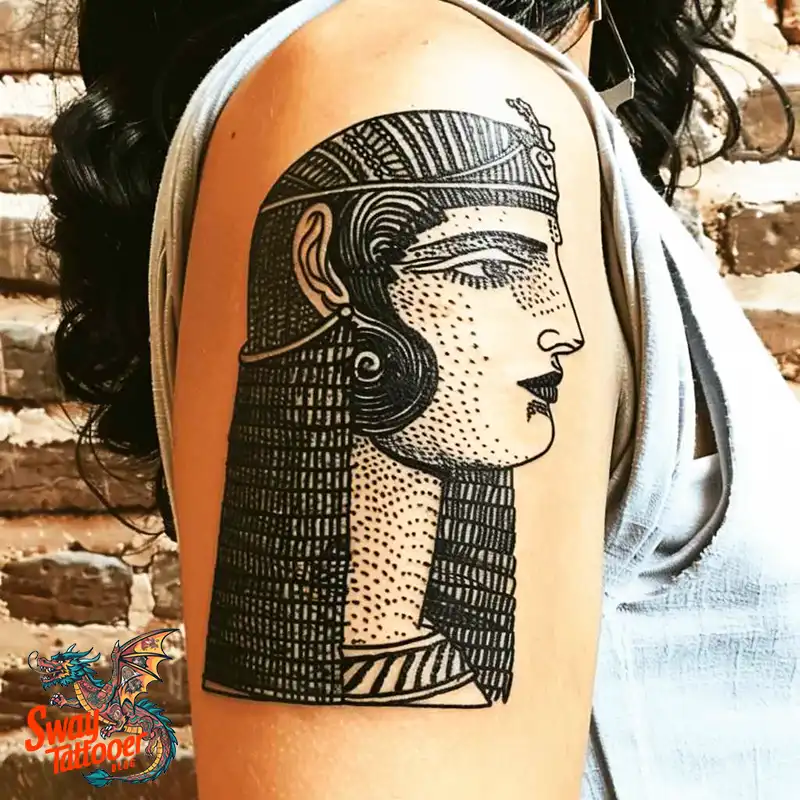
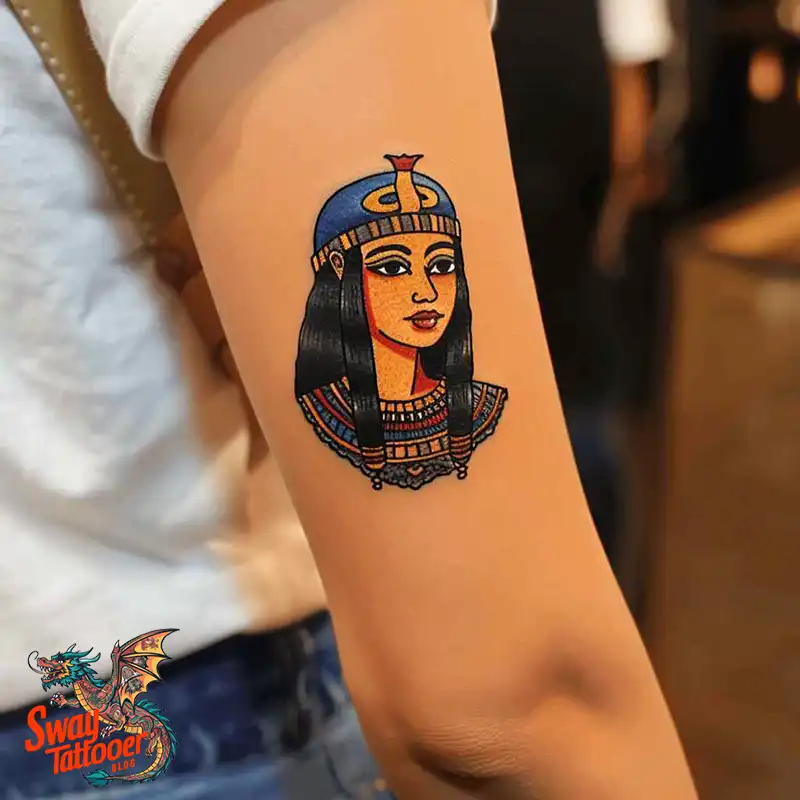
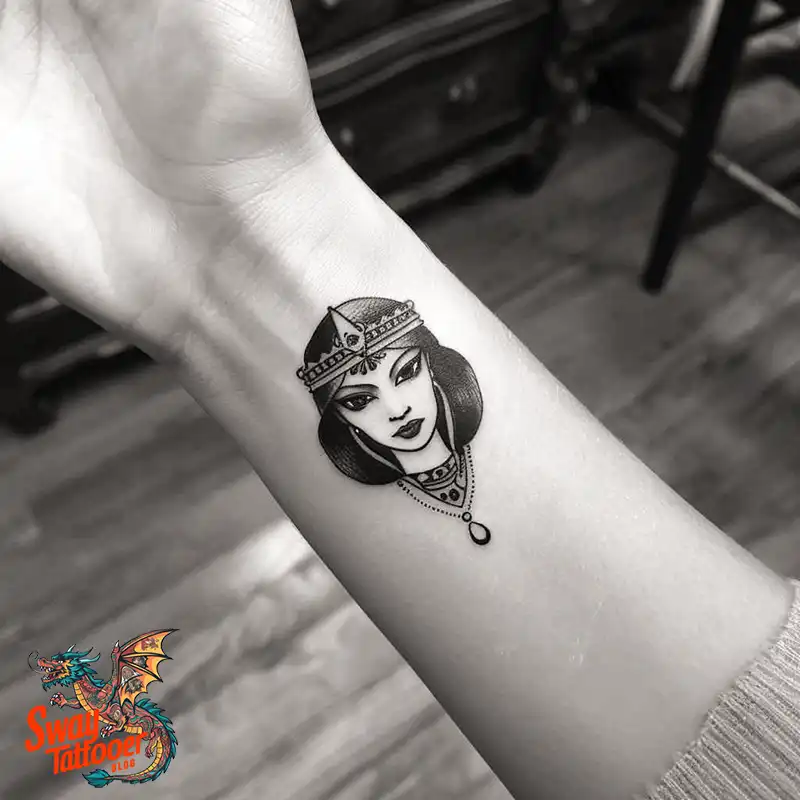

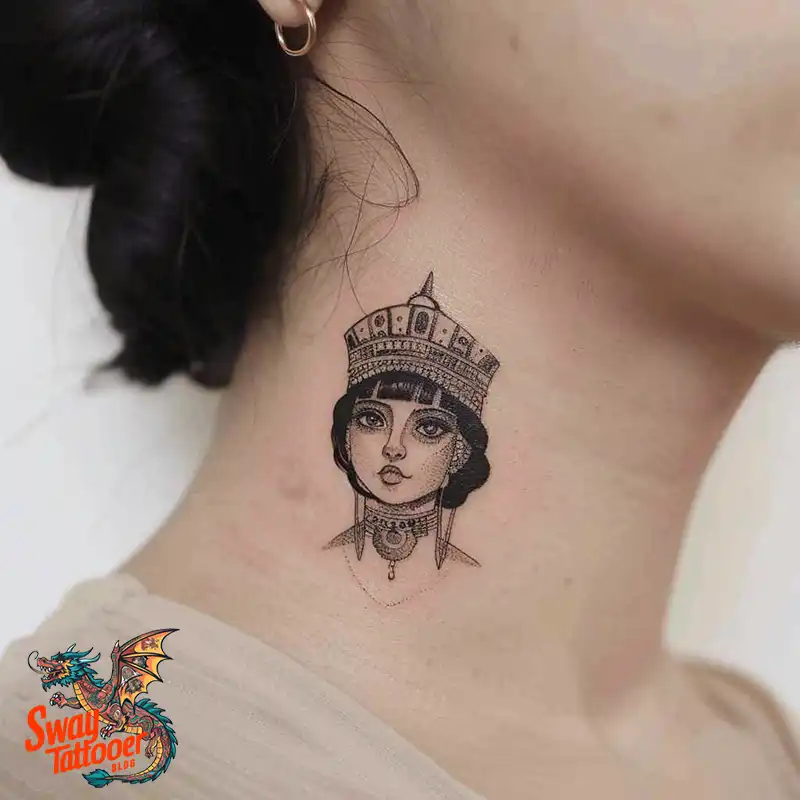

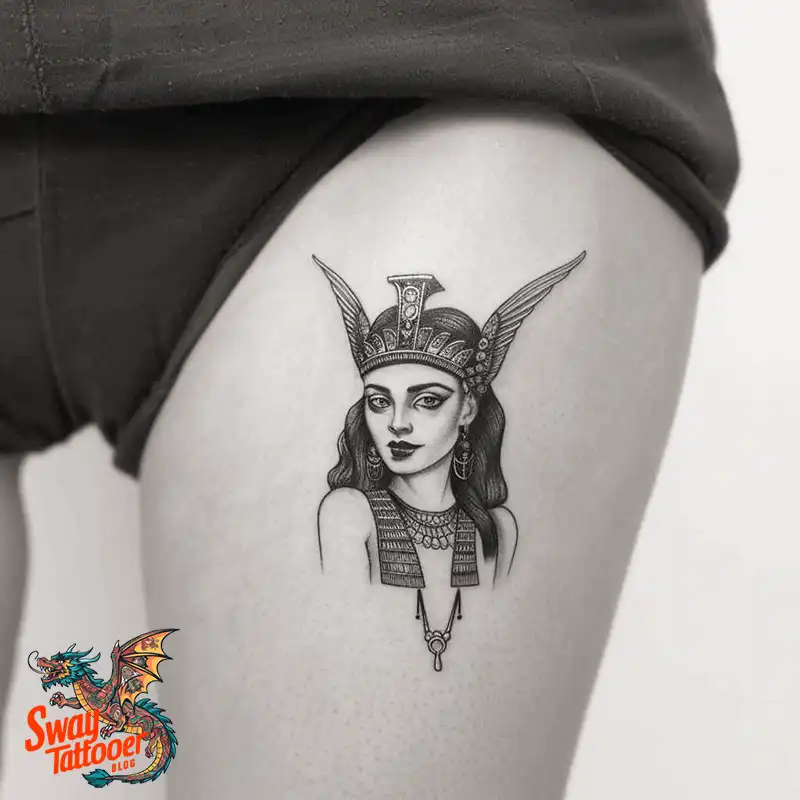

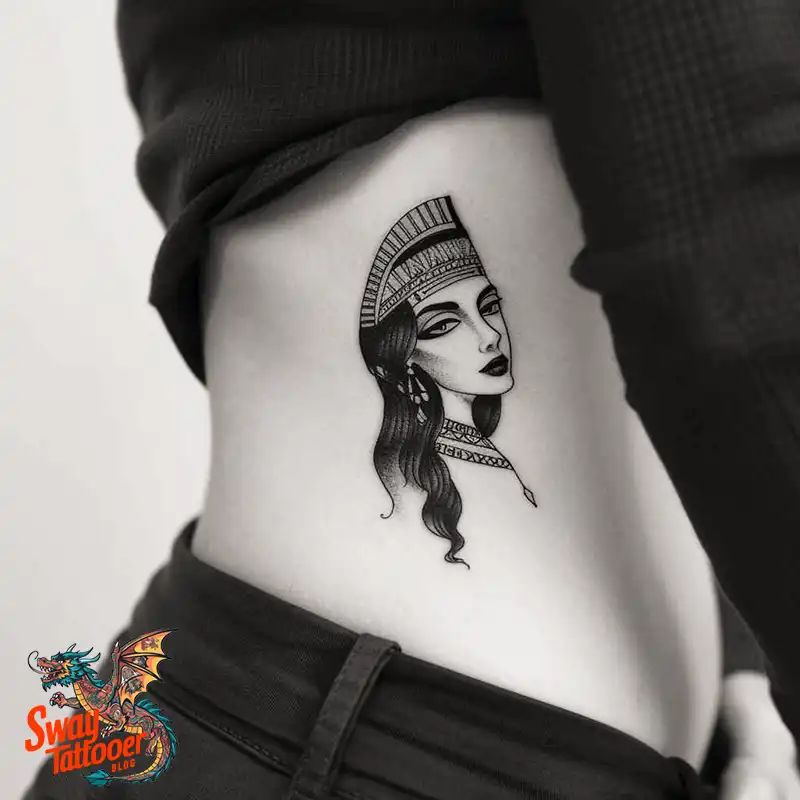
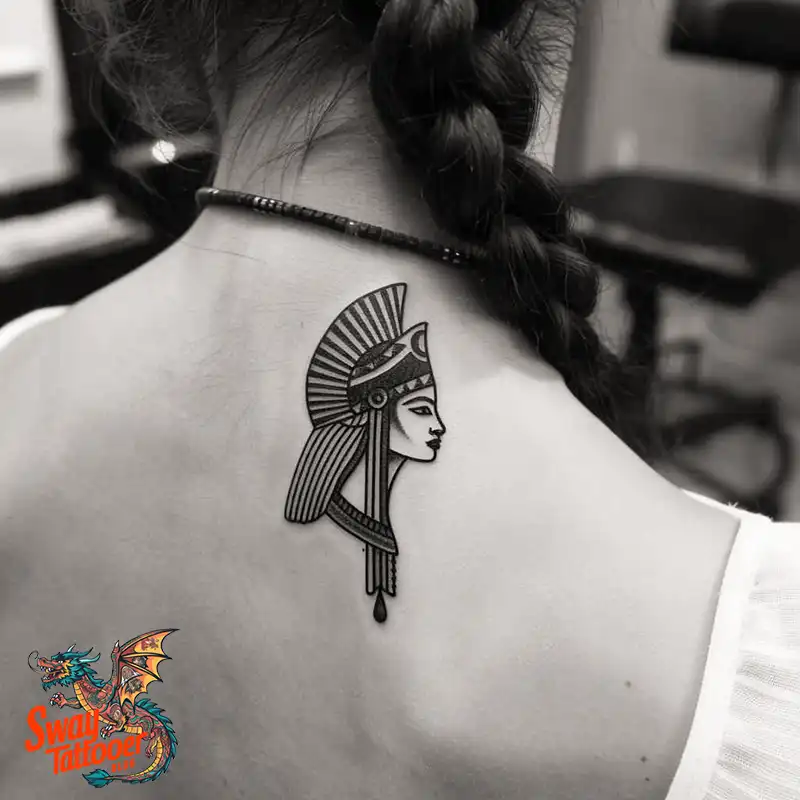
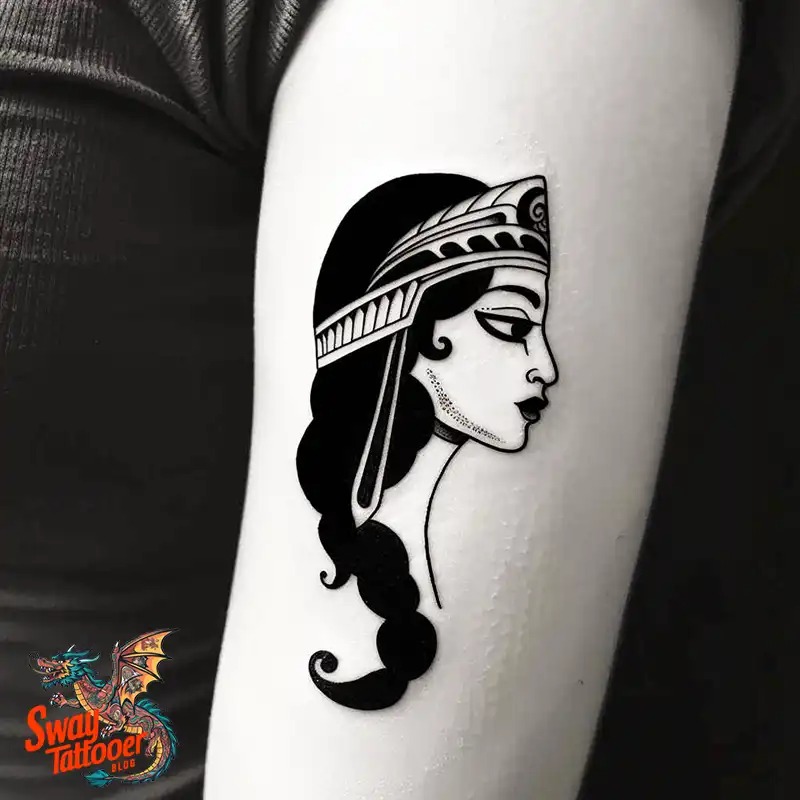
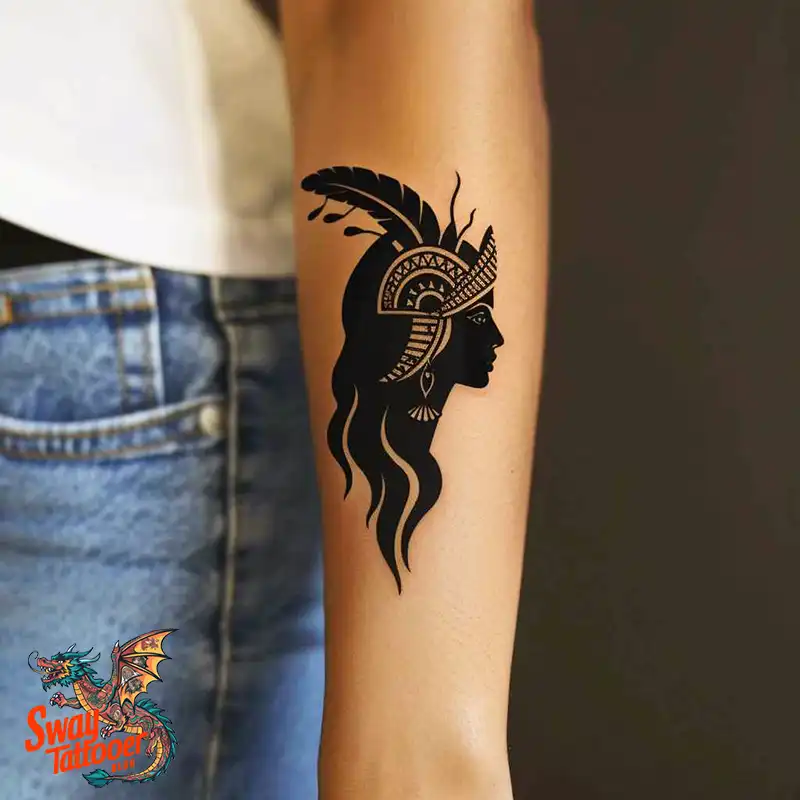
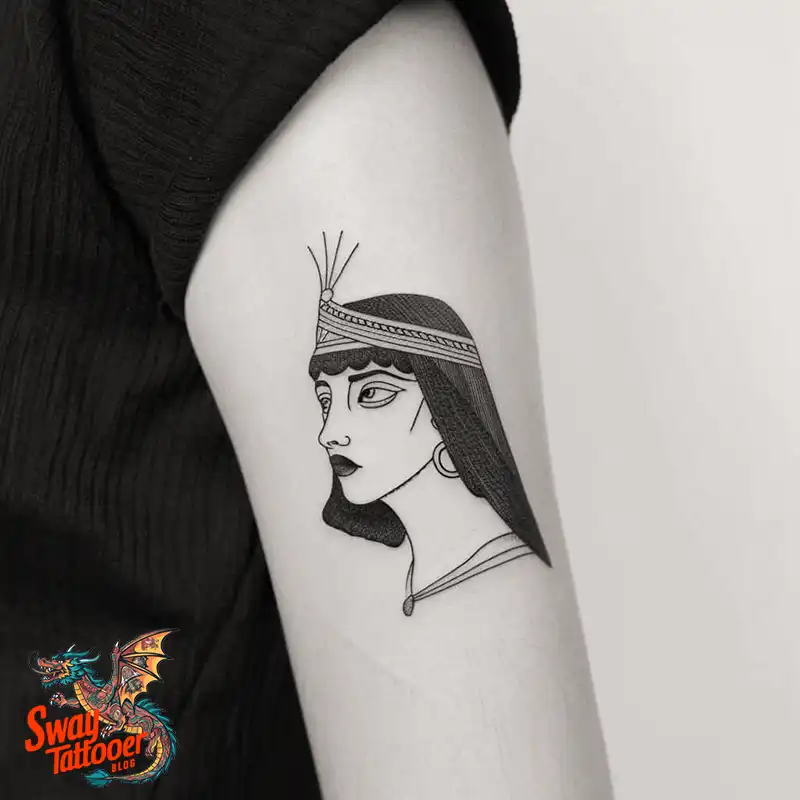
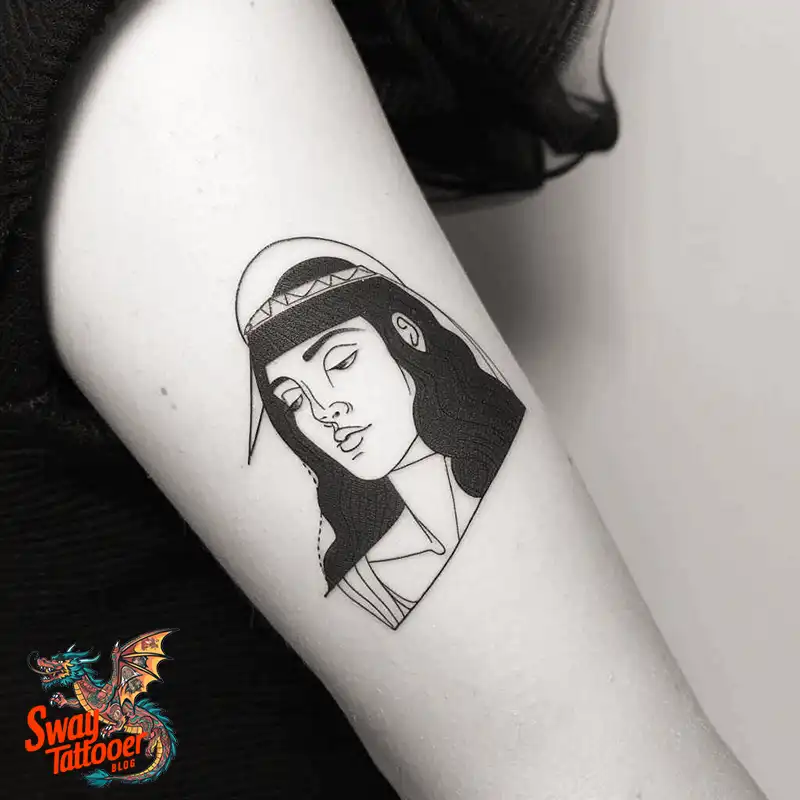
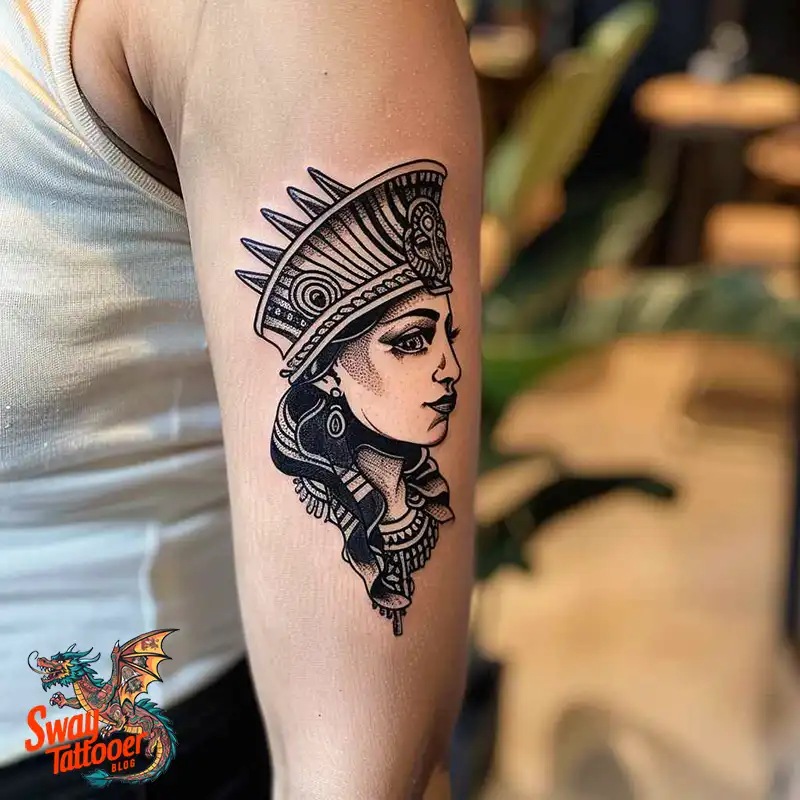
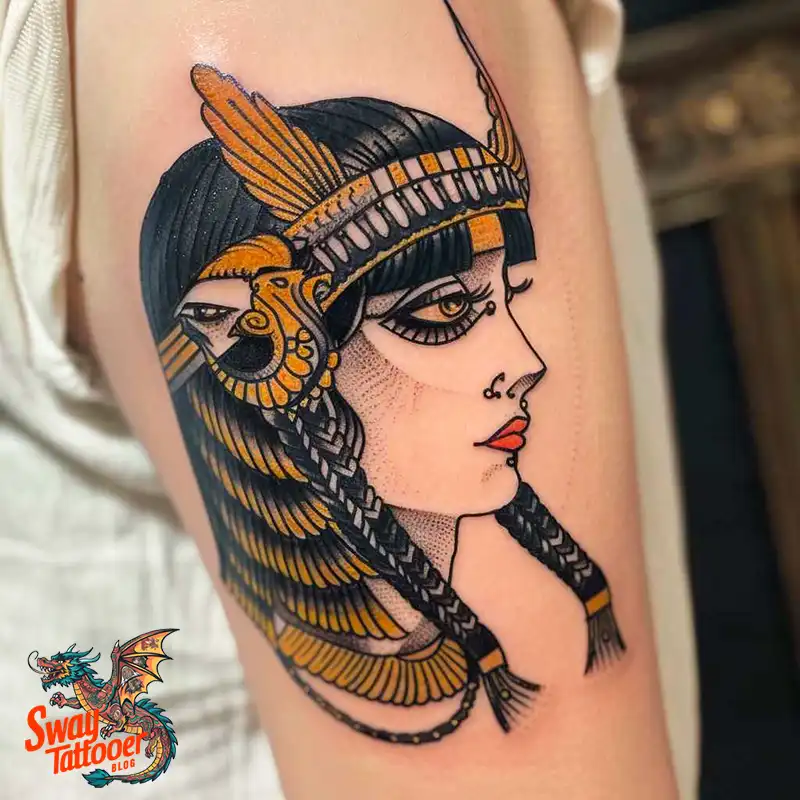
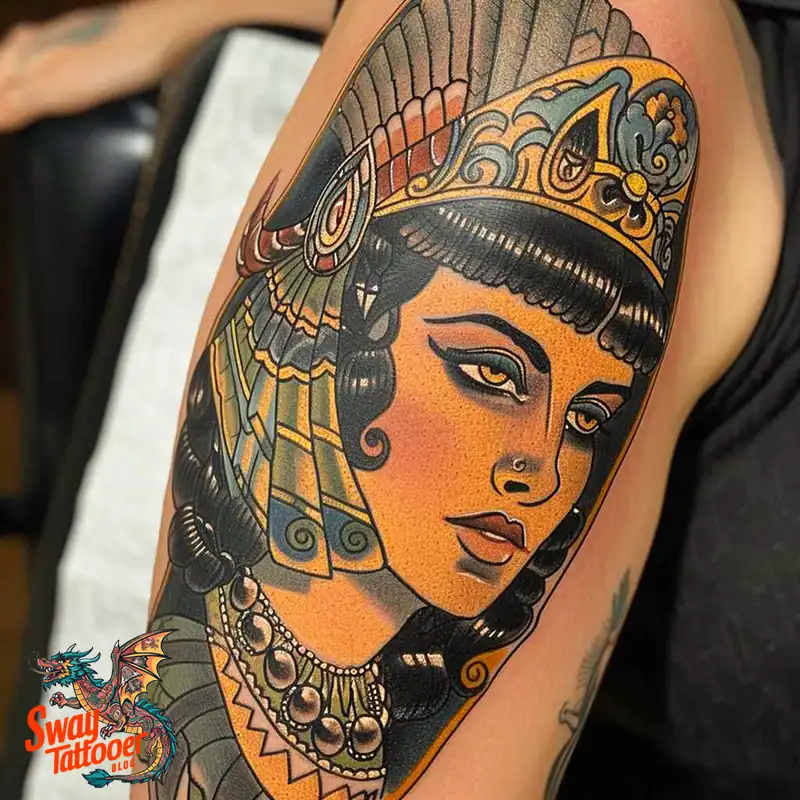
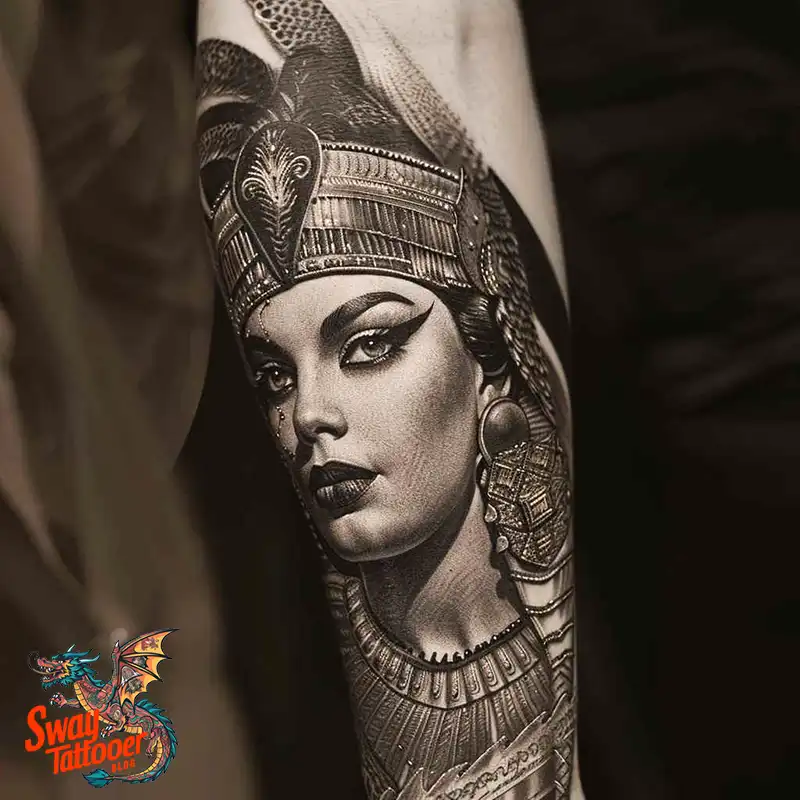
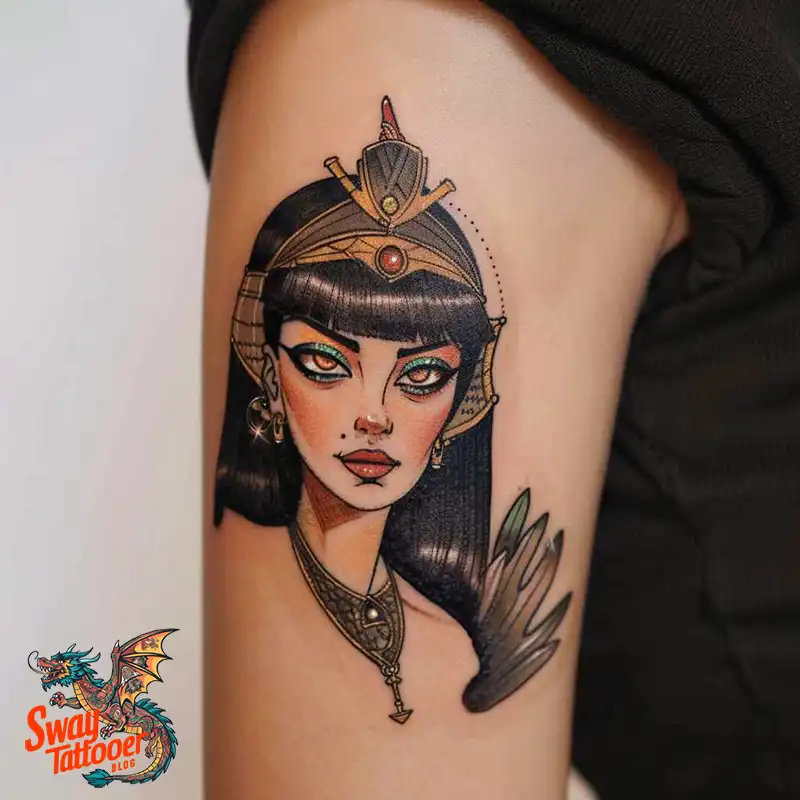



Long-Term Maintenance for Portrait Longevity
The biggest threat to a detailed tattoo is sunlight. UV light breaks down the ink and destroys the contrast.
- The Sunscreen Imperative: Once healed, the protocol requires daily use of a broad-spectrum sunscreen (SPF 30 or higher). Avoiding tanning beds entirely is necessary.
- The Realism Paradox: Realistic shading is less durable than thick outlines. The subtle colors used to define her face are prone to fading. To maintain the sharp lines of her features, you must plan for professional touch-up sessions every few years.
- Color Care: For Egyptian colors like blue or green, strict sun protection is necessary. These colors can become dull without careful sun shielding.
FAQs:
Q: Is getting a Cleopatra tattoo cultural appropriation?
This is a complex question. Cleopatra was a Greek (Macedonian) who adopted Egyptian symbols (like the Uraeus cobra) for political power. The symbolism is already mixed. If you approach the design with respect and honor her history, it generally avoids being harmful appropriation. Focus on her power and intellect as a personal tribute.
Q: Did Cleopatra VII actually have tattoos?
No. Historical records suggest that Greek and Roman rulers did not get tattoos. They associated tattoos with “barbarians” or punishment. It is historically unlikely she would have had visible tattoos.
Q: How does the Elizabeth Taylor film influence modern tattoo designs?
The 1963 film made a big impact. Elizabeth Taylor’s dramatic eyeliner and makeup defined the 1960s mod beauty standards. Many modern tattoos draw from this glamorous, stylized Hollywood image, often choosing the film’s look over strict ancient history.
Conclusion
The Cleopatra tattoo is a magnificent choice. It symbolizes power, smarts, and enduring allure. The successful result needs an informed commitment:
- Embrace Realism: You must choose an artist expert in Neo-Traditional or Realism to capture the details.
- Use a Large Canvas: Select a stable spot like the outer thigh for the best long-term quality of the portrait.
- Protect the Art: Commit to daily SPF 30+ sunscreen for life. This protects the delicate shading and color, ensuring your homage to the queen remains vibrant forever.


Leave a Reply